Are you asking the right questions?
Art of Observation
The
Navigating Your Child's Montessori Journey



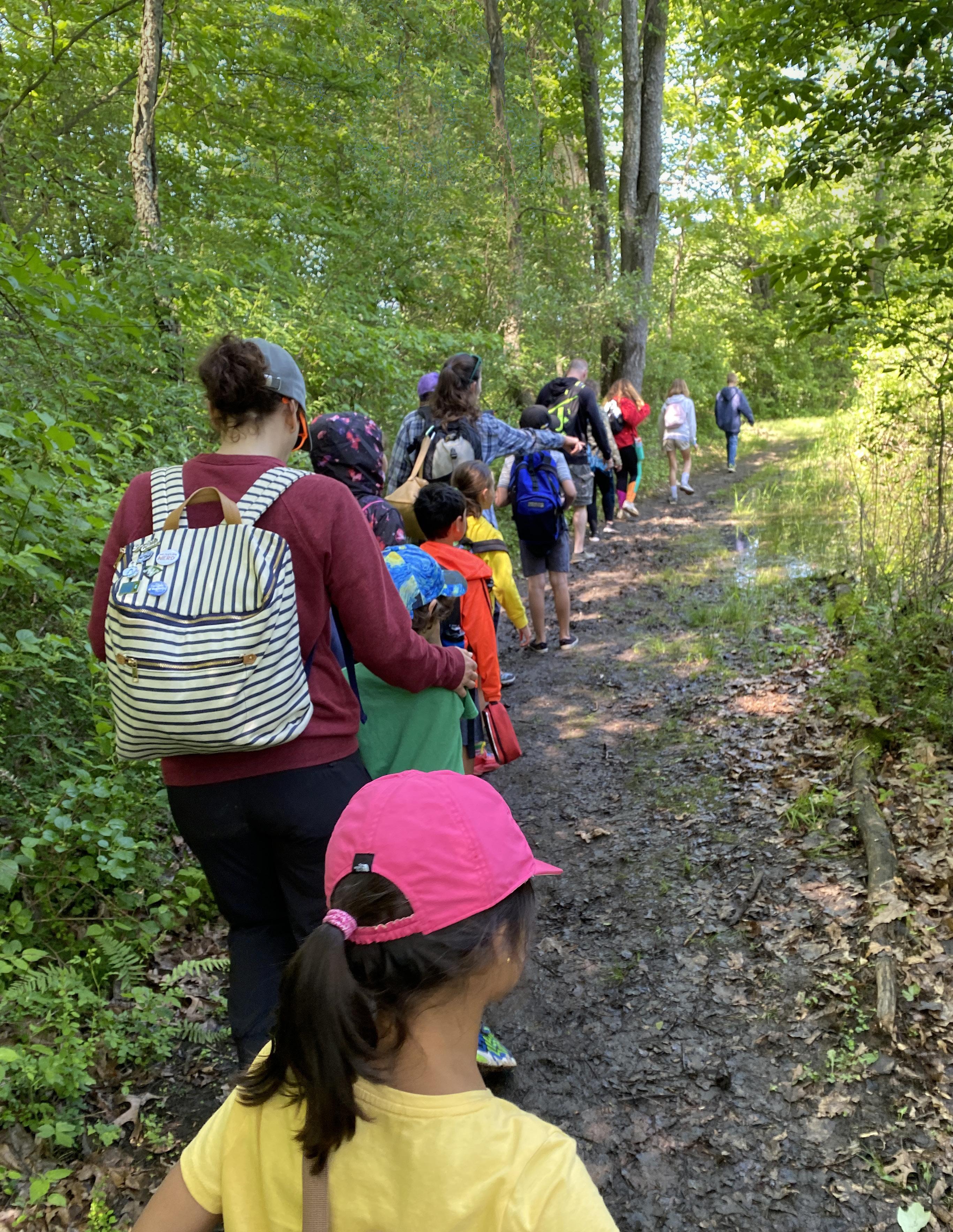
$8.00 Vol. 30 No. 3 SEPTEMBER 2023
Dearborn Heights Montessori Center:


Celebrating 50 Years and Embracing New Beginnings
Dearborn Heights Montessori Center was established in 1972 by well-known Montessori educator Kay Neff. Like so many others, Dearborn Heights Montessori was founded to ensure that her own children could benefit from a great Montessori education. For over 40 years, she shaped the institution’s ethos and values. Today, the torch has been passed to her protégé, Laura Springer, who continues to nurture and extend the school’s legacy.
From its humble beginnings with just nine students, the school steadily grew to a second and third campus, with an enrollment of more than 400 students, ranging from toddlers to 8th graders.
For most of its history, the heartbeat of the school was in Dearborn Heights. However, in recent years, the school’s base moved towards the Plymouth-Canton area, where it already had a satellite location serving toddlers and primary Montessori classes. As enrollment fell in Dearborn Heights, the school decided to sell the original building and expand on its Plymouth-Canton campus. A second classroom building, and gym will open this fall.
As the school consolidates its new facilities, it has begun searching for a second and larger piece of land nearby, where the school will eventually move its Elementary, Middle School, and Montessori High School that is planned for the future. At that point, the Plymouth-Canton campus will once again become home to the school’s youngest students.
FEATURED ON COVER
Tomorrow’s Child (ISSN 10716246), published four times a year, is the official magazine of The Montessori Foundation, a non-profit organization. The opinions expressed in Tomorrow’s Child editorials, columns, and features are those of the authors and do not necessarily represent the position of the magazine or The Montessori Foundation. Acceptance of advertising does not represent the Foundation’s endorsement of any product or service.
It is policy of The Montessori Foundation, a non-profit organization, to encourage support for the organization by discounting the sale of bulk order shipments of Tomorrow’s Child in order that schools may make the magazine available to their families. The Montessori Foundation does NOT grant permission to reprint material from Tomorrow’s Child in any other form (book, newsletter, journals). Copies of this issue or back issues are available for purchase through our online bookstore: montessori.org. For School Group Memberships, call 800-6555843 (toll free), or place your order at montessori.org. The Montessori Foundation does not provide refunds for canceled School Group Memberships.
Send all correspondence to:
The Montessori Foundation | 19600 E State Road 64, Bradenton, FL 34212-8921
MONTESSORI.ORG
EDITOR Joyce St. Giermaine
PRESIDENT Tim Seldin
PROGRAM DIRECTOR Lorna McGrath
EVENTS & MEMBERSHIP Kristi Antczak
DISPLAY ADVERTISING Joyce St. Giermaine
BOOKKEEPER Don Dinsmore
PRINTED BY InterPrint
Note: InterPrint is now FSC,SFI and PEFC Chain-of-Custody Tri-Certified. Chain-of-custody certification offers paper that has been harvested from responsibly managed forests, then verifiably traced through all stages of print production
Workshops, IMC Memberships, Past Issues & Orders or Questions about an Order Phone: 800-632-4121 info@montessori.org
Conference Coordinator George Markham georgemarkham@montessori.org
Subscriptions, Bookkeeping, & Classified Ads
Don Dinsmore Phone: 941-729-9565/800-655-5843
Fax: 941-745-3111 dondinsmore@montessori.org
Display Advertising Don Dinsmore Phone: 941-729-9565/Fax: 941-745-3111
dondinsmore@montessori.org
Montessori Family Alliance Lorna McGrath Phone: 941-729-9565/800-655-5843
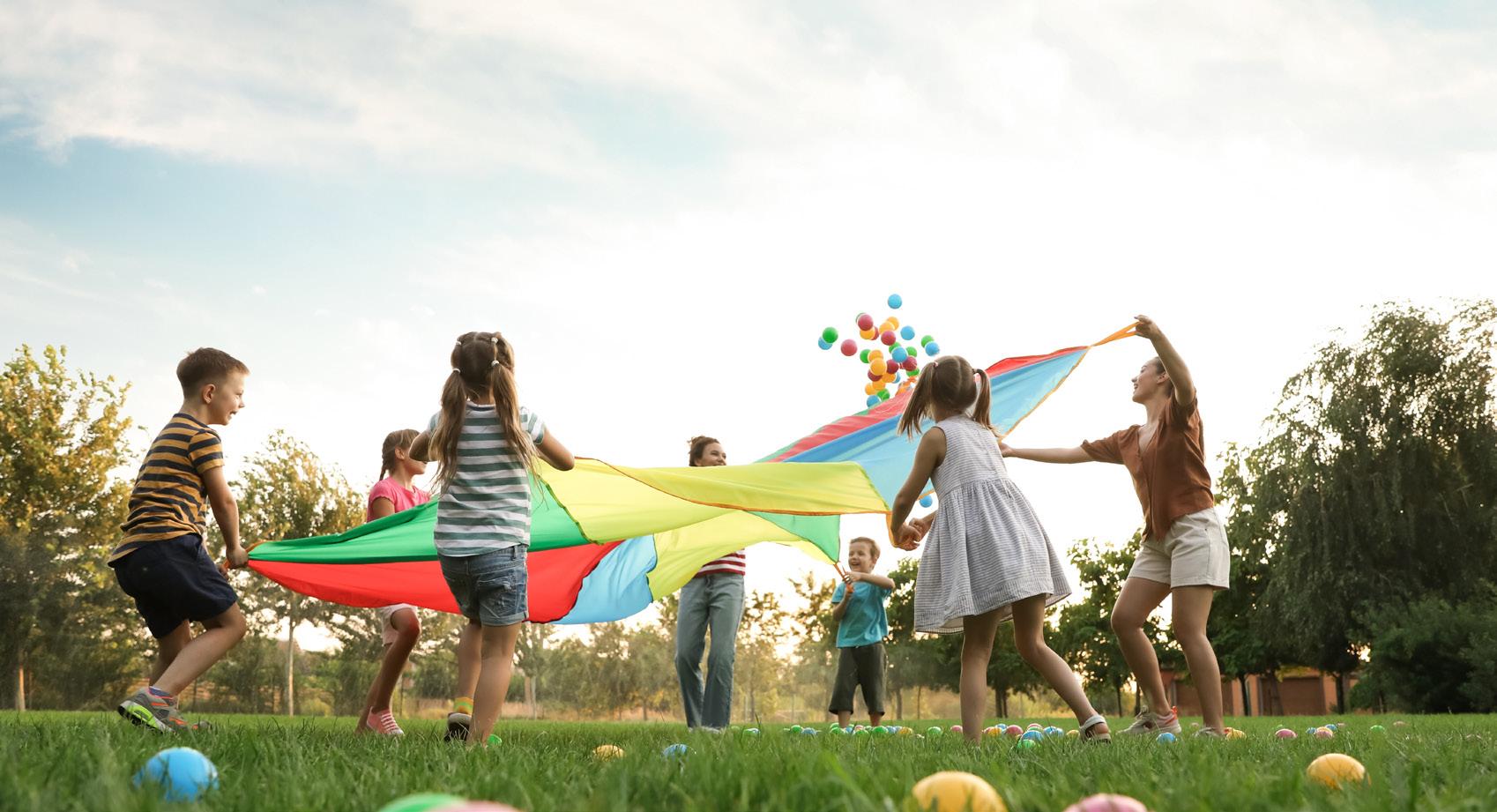
lornamcgrath@montessori.org
Executive Director of the IMC Kathy Leitch Phone: 941-729-9565/800-655-5843
kathyleitch@montessori.org
Senior Consultant Tanya Ryskind, JD tanyaryskind@montessori.org
Senior Consultant Robin Howe, EdD robinhowe@montessori.org
TOMORROW'S CHILD © § SEPTEMBER 2023 § WWW.MONTESSORI.ORG 3 26 CURATED FROM: MONTESSORI IN YOUR HOME 27 DEAR CATHIE: ATTRIBUTES OF MONTESSORI CHILDREN 28 MONTESSORI 101: WHAT IS A MONTESSORI MATERIAL 30 BOOK REVIEWS BY LORNA MCGRATH Letter from the MFA Director by Lorna McGrath 5 Right From the Start by Montessori Family Life Webinars 6 Are you asking the right questions? by Kathryn Kvols 10 Collaborative Projects by Margot Garfield-Anderson 11 Grace and Courtesy by Alexandra Gallen 13 The Art of Observation by Friends of the Montessori Family Alliance 15 Spotlight on Montessori by 3 Mariposas Montessori 16 Saturdays in the Nido by Allison Gerlach 18 Words of Praise by Montessori Family Alliance Staff
Joyful Learning: Montessori for the Elementary Years by Tim Seldin
Reflections of a Montessori Graduate by Jacob Antzcac
Navigating Your Child's Montessori Journey by Montessori Foundation Staff
19
20
23
25
“
— ELEANOR ROOSEVELT
What could we accomplish if we knew we could not fail?”
NOW AVAILABLE ON MONTESSORI.ORG!

Montessori 101: What Every Parent Needs to Know
This 80-page full-color publication is a wonderful resource for anyone seeking to demystify Montessori. It addresses topics such as the history and philosophy of Montessori; offers a guided tour of the Montessori classroom; and serves as an illustrated guide to dozens of wonderful Montessori materials. This mini-encylopedia of Montessori is newly redesigned and contains new sections on Infant/Toddler and Montessori Secondary programs. It is a must-have resource for anyone interested in Montessori, and one that parents will surely refer to throughout their child’s Montessori experience.

TOMORROW'S CHILD © § SEPTEMBER 2023 § WWW.MONTESSORI.ORG 4
ORDER NOW AT: tinyurl.com/the-new-101
Letter from the MFA Program Director
Dear Montessori Family Alliance Members,
The Montessori Family Alliance is an integral program of the Montessori Foundation, bringing you a variety of parenting tools. We appreciate your continuing support, ideas, and involvement in creating Montessori-inspired family life, as well as in choosing Montessori education for your child. By doing so, you are providing your child with consistency and alignment with two of the most important aspects of their lives: their family and their school.
During the 2022-23 school year, we spent a great deal of time searching for information to better serve you, your family, and your school, whether it be the content we provide or the method of delivering it. You helped by answering surveys, attending focus groups, and volunteering to assist in pilot parenting programs. Thank you.
All of you who are reading this letter are already members of the Montessori Family Alliance.

Because of your participation, we are starting off the 2023-24 school year with some new and exciting offerings for you and your school.
Montessori.org—home of the Montessori Foundation, the International Montessori Council, and the Montessori Family Alliance—officially released The Montessori App in the iOS and Android app stores. This new app organizes all Montessori.org resources into one central spot in a user-friendly, personalized way. Anyone can join the app, free-ofcharge, to discover upcoming events and webcasts, receive notifications about news, navigate through

our shop, access our website, schedule meetings with consultants, review archived articles and book reviews, and access helpful resources, such as job boards and information about parenting programs, all in one spot.

The Parenting Puzzle: ‘Peacing’ It All Together is a trusted parenting program that many schools offer to their parents and caregivers, either in person or online. It is a family leadership program that is in alignment with Montessori principles and answers the question, “How do the teachers get the children to work and live together so peacefully?” This year, any school that purchases a bulk membership to the Montessori Family Alliance receives a one-year school license to offer this program at their school, valued at $995.00.
In addition to our weekly webinars during the day, we have begun to offer Wit & Wisdom: a family chat on the last Wednesday of each month at 8:00 pm ET. It is an online ZOOM discussion group created for parents and caregivers. Each month, I will host an open discussion on topics of interest in child/adolescent development, children’s behavior, and education. We will share ideas and information together. It is open to all, and it’s free! We truly hope you will join us.
As we continue to provide programs and services for our members, we hope that you will let us know how things are going, because when you feel heard and supported, so do your children.
Lorna McGrath MFA Program Director lornamcgrath@montessori.org
TOMORROW'S CHILD © § SEPTEMBER 2023 § WWW.MONTESSORI.ORG 5
Download the Montessori App Today …and find everything you need in one, convenient place. Scan Code
RIGHT FROM THE START
 by Alanea Williams
by Alanea Williams
TOMORROW'S CHILD © § SEPTEMBER 2023 § WWW.MONTESSORI.ORG 6
INSIDE A MONTESSORI INFANT CLASSROOM

0-3 YEARS
S
ome Montessori schools are fortunate to have the physical space and community to offer an infant program. This is a fantastic opportunity for families, as parents return to work when their maternity/parental leave is over! As with all childcare and school enrollment decisions; do the research; take a school tour; ask lots of questions; talk to other parents; and observe classrooms.
What should parents expect when starting?
Once you have decided to enroll your infant in a Montessori classroom, there will be changes to your daily routine. This is a whole new world for the child. There will be a settling-in period as any new infant in group care transitions to life outside the home. Most assuredly, there will be a shift in daytime sleep patterns, as a newly enrolled infant adjusts to the new sounds and routines of the classroom. Breastfeeding moms will want to plan for bottle-feeding if unable to come to school and nurse during the day. Schedules and routines are geared towards each individual child in the Montessori infant environment. As development progresses, a child’s napping routines and dietary needs continue to change. For example, a newly mobile infant will most likely require more nourishment during the day. Think of the energy they expend! Families may also experience changes in their child’s home schedule as development progresses.
Parents will want to send their infant to school in simple, comfortable clothing that supports movement and exploration. Shoes aren’t really necessary and may hinder movement in the classroom, although shoes may be needed for mobile infants outside. Many teachers will ask parents for a small supply of clothes to keep in the classroom as spills, leaks, and spitting up are common. Keeping a light jacket at school can be helpful for spurof-the-moment outside time when it unexpectedly turns out to be a nice day. Always have a supply of diapers at school. Types of diapers (cloth or disposable) vary widely among families and schools. Toileting awareness begins with older infants, and a supply of cloth underwear may be needed.
Caregiving
The caregiving moments shared with an adult are a substantial and important part of an infant’s day. These include: bottles/eating; diapering/toileting; changing clothes; hand washing; and soothing to sleep. “Quality infant caregiving is based on respectful and responsive relation-based care by the adult through sensitive observation of the infant.” (Kovach and Patrick, 2008, p. 13). Teachers will build loving, trusting relationships with each child during caregiving, and this promotes a healthy sense of self and feeling valued. In addition, your child will feel safe
7
TOMORROW'S CHILD © § SEPTEMBER 2023 § WWW.MONTESSORI.ORG
and secure with kind, responsive caregiving and consistent routines; this allows children to freely explore and learn about the exciting new world around them. Teachers will be observing your infant for cues about hunger, tiredness, and other caregiving needs.
Freedom of Movement, Freedom of Choice, and the Prepared Environment
An essential element of the Montessori environment is freedom of movement. When not involved in caregiving routines or resting, an infant will be playing on the floor in a safe space for movement and exploration. While this may look mundane to the casual observer, these infants are actively engaged in rapid cognitive and physical development.

“When awake and physically separated from its mother, a baby’s next natural playground is the floor. It is from the ground that a child can learn to develop muscle tone as an opposing force to gravity.” (Goddard Blythe, 2005, p. 183). On the floor, a variety of safe objects are placed nearby so that infants can choose what they want to hold or manipulate. A child’s hands play an essential role in freedom of movement. Maria Montessori wrote and lectured extensively about the crucial role hands play in brain and body development. “Children develop their senses by handling objects.” “Coordination is developed through movement, especially through the movements of the hands.” (Montessori, 2012, p. 167). For immobile infants, items are placed nearby so they can practice reaching, touching, and grasping. Once infants are mobile, they are free to move and explore around the classroom. They may engage in cause-and-effect activities, such as stacking or dumping. Some days a mobile infant may prefer sustained large muscle activity such as a pull-up bar or climbing over a low bridge.
Parents will notice there are no electronic toys (think flashing lights and shrill mechanical sounds) in an infant classroom. “Being entertained by overstimulating objects can influence babies to observe and become passive rather than active participants.” (Kovach & Da Ros-Voseles, 2008, p. 137). Infants are encouraged to explore and make discoveries on their own at their own pace; this empowering freedom of choice promotes cognitive learning and curiosity about the world around them. Another essential practice in the Montessori environment is repetition. A
child will play with an object or engage in an activity until they are no longer interested. This supports concentration and working memory—important components of brain development. Typically, once an infant has exhausted their interest in a particular item or activity, they move on to something else. Teachers will observe their readiness for new materials and activities as development progresses.
Language
The explosion of language that begins at birth continues in the Montessori infant classroom. The classroom environment will be rich with both verbal and non-verbal communication from teachers. Non-verbal
suited for multiple language acquisition. Most young children easily shift from their home language to the primary language of the classroom.
A love of reading books that starts at home will continue in the Montessori classroom. The infant classroom environment is prepared with easily reachable board books. Once they are mobile, an infant can freely choose a board book to flip through on the floor or offer to a teacher to read out loud. Spontaneous book reading on the floor with a teacher is common as infants adore choosing a book and having a teacher read to them and spotlight the photos or illustrations. The infant classroom books are based in realism: photos, illustrations, and simple text depict
THERE WILL BE A SETTLING-IN PERIOD AS ANY NEW INFANT IN GROUP CARE TRANSITIONS TO LIFE OUTSIDE THE HOME.
communication includes eye contact, facial expressions, and gentle touches. Teachers will verbally prepare an infant for caregiving procedures and talk through the process with them. Teachers will also offer vocabulary words and richly describe new situations and opportunities. Of course, verbal conversations between a teacher and a young infant are mostly one-sided, but expressive language develops as an older infant begins with simple one-syllable words like ba or ball . Singing simple songs or rhymes is also a part of daily life in the classroom.
Some infants will experience more than one language if parents speak a different language at home. A young child’s brain is especially
real life. This aligns with brain development at this age; the infant's brain isn’t ready to comprehend abstract concepts or fantasy topics.
Building Community and Nurturing Independence
Once enrolled in a Montessori school, infants will interact daily with other infants. The value of this social opportunity is priceless. Infant-to-infant interactions promote healthy social and emotional growth as well as nurturing a sense of belonging in their classroom community. Most infants will naturally gravitate toward one another and communicate through facial expressions,
TOMORROW'S CHILD © § SEPTEMBER 2023 § WWW.MONTESSORI.ORG 8
sounds, and hand movements. Teachers will supervise interactions and provide positive guidance if needed, such as modeling a gentle touch. Heart-warming moments of early empathy development are common, such as one infant picking up a dropped cup and handing it to their classmate who dropped it.

Another community-building and fun part of the Montessori infant environment are meals or snacks eaten at a table with others. Low tables and chairs allow infants to have a meal with their classmates, once they are ready to begin eating purees or solids that parents bring with them. Some schools may provide snacks and meals for older infants. Infants at the table will also be introduced to drinking water from small open cups and try their hand at using a small spoon. This is lovely to observe! Just as most of us adults enjoy a meal with others, so do infants. Older, walking infants may help prepare the table or clean up afterwards; they are very drawn to these purposeful activities of daily life.
As infants grow older, they will also be invited to actively participate in their body care such as diapering, toileting, and changing clothes or shoes. This supports their growing autonomy and independence.
Time in Nature
Your infant may also be spending more time outdoors than ever before. Being in nature on a beautiful day is a soothing and rejuvenating experience for children and adults. These
early years are the beginning of a child’s relationship with nature. Most Montessori infant programs offer time outside the classroom: gazing at the autumn leaves on a tree or smelling the springtime flowers. “Trees, leaves, and flowers are nature’s own mobiles” (Davies and Uzodike, 2021, p. 157). Time in nature and fresh air provide a wide array of sensory experiences for the growing brain. Once an infant is mobile, they will begin joyously exploring the wonders of nature as they use their large muscles for balance and coordinated movement like walking on uneven terrain or climbing a hill. Outside time also promotes increased social interaction among infants as they engage in an activity together and express their delight.
Communication and Working as a Team
Regular communication between parents and teachers is crucial for nurturing a child’s healthy development. Many schools use a digital app or school-specific software to relay daily information to parents, such as eating, sleeping, diapering, and supply needs. Communication goes both ways. Parents should not hesitate to express concerns or ask questions. Teachers and parents must also have open communication about sicknesses and the child’s health. Communication at morning drop-off is important, too. For example, writing a simple note or brief verbal communication at morning dropoff can be very helpful for teachers. “My child didn’t sleep well last night” will assist teachers with your child’s care and needs
that day. Many Montessori schools schedule regular conferences so that parents will have uninterrupted time to talk to their child’s teachers, ask questions, discuss developmental milestones, and plan ahead.
The Montessori Journey Continues…

Infant Montessori teachers will closely observe the children and the classroom environment for ongoing healthy brain and body development in the first 18 months of life (classroom age ranges will vary by school). Through kind and responsive caregiving, teachers will build a secure, trusting relationship with each infant and family so that a child can grow and learn at their own pace. Time immersed in a Montessori infant classroom will surely fly by, and before you know it, your child will be ready to begin the next stage of their childhood journey in the toddler classroom.
REFERENCES
Davies, S. and Uzodike, J. 2021. The Montessori Baby. Workman Publishing, NY
Goodard Blythe, S. 2005. The WellBalanced Child. Hawthorn Press, Gloucestershire, UK
Kovach, B. and Da Ros-Voseles, D. 2008. Being With Babies. Gryphon House, Inc. Silver Spring, MD
Kovach, B. and Patrick, S. 2012. Being with Infants & Toddlers. LBK Publishing, Tulsa, OK
Montessori, M. 2012. The 1946 London Lectures. Montessori-Pierson Publishing Company, Amsterdam, The Netherlands
Alanea Williams. began her Montessori journey at SAS Institute Infant and Toddler Center in Cary, NC. During her 18 years there, she earned an AMS Infant/Toddler Credential and was a lead teacher as well as a teacher trainer. For the past 6 years, she has been guiding teachers at the infant/toddler level with The Center for Guided Montessori Studies.
She has a B.S. in Biology from Florida Tech and a M.S. in Fisheries from Louisiana State University.
TOMORROW'S CHILD © § SEPTEMBER 2023 § WWW.MONTESSORI.ORG 9
MOST YOUNG CHILDREN EASILY SHIFT FROM THEIR HOME LANGUAGE TO THE PRIMARY LANGUAGE OF THE CLASSROOM.
by Kathryn Kvols
Are You Asking Your Kids the Right Questions?
ASK QUESTIONS THAT HELP YOUR CHILD SELF-REFLECT.
“Did you do your homework?” “Did you do your chores?” These questions often fall on deaf ears or, at best, lend themselves to dismissive answers, idle promises, and, at worst, disrespectful retorts.
Four very important things happen when we learn to ask good questions:

1. We teach children the important life skill of self-reflection. This skill is necessary to improve our character. A mother who was taking the training to become a Redirecting Children’s Behavior Instructor asked her learning-challenged son how he felt about his spelling test. Mom would have normally just asked how he did on the test. His answer was quite surprising to her. He said, “I usually wait until the night before the test to study. I think I will start doing a little bit each night. Then I think I can get a 100 on the test!” Mom had inadvertently lowered her expectations of her son by simply asking for his results. By asking a self-reflective question, her son built his character.
2. You learn more about our child. In the above example, Mom learned that her son really wanted to do better and could come up with a plan on his own.
3. We help build cognitive skills. Mom initially asked for his results on the test which led to a quick or 'pat' answers. By asking him how he felt, her son had to stop and think, “How do I feel?”
4. We develop deeper connections. Our kids need to feel connected in order to develop healthy bonds. In the above example, the child felt more connected to his Mom because she cared about how he felt.
Here is a list of effective questions you may want to try.
"What is your plan for doing your homework, a chore, etc.?"
"What was something you did that was helpful (any value you want to instill) to someone today?"
"When were you tempted to not be honest with someone today?"
"What will happen if_____?"
"What will you do next time____ happens?"
It is imperative that you ask these questions with curiosity. If your child detects a tone of judgment, they may get defensive or close down.
Kathryn Kvols, a mom of 5, struggled with her parenting skills. Being brought up with strict, shame based-discipline, Kathryn knew she wanted something different for her children and her own peace of mind.
During her 30 years of study on best parenting practices, she wrote the book and parenting course Redirecting Children’s Behavior. This course is being taught in 21 countries and has been translated into 5 languages. Her researched-based strategies have empowered thousands of parents to redirect their kids misbehaviors into positive outcomes without nagging, yelling, or taking away privileges. Redirecting Children’s Behavior can be ordered on Amazon.
A sought-after international speaker, trainer, and parenting coach, her most important role has been her children. Her experiences as a single mom, and a stepmom make her a compassionate and effective facilitator. Her participants always walk away with practical tools they can implement immediately that create connection rather than conflict. For more information visit her website at www.apecparenting.com.

TOMORROW'S CHILD © § SEPTEMBER 2023 § WWW.MONTESSORI.ORG
10
Collaborative Projects with Elementary-Aged Children
by Margot Garfield-Anderson
(How to Keep Your Four Granddaughters Occupied and off Their Phones)
My husband and I recently painted our kitchen. Many different shades of green were tried on various walls until we settled on the perfect shade. However, we were left with four different sample testers. I’m very conscious of not wasting just about anything and did not want to toss them. What could I possibly use them for? The answer came through: a project to try out with my four granddaughters. (We have two granddaughters from each of our two daughters, ranging in age from 7.5 to 13.)

The two families were set to visit us in Florida in April. I love to have them do all kinds of projects when we are together. Plus, it would take them off their devices and engage them in conversation for a few hours.

We scheduled a Facetime visit and I presented this idea. My original thought was that I would provide a large canvas divided into 4 equal parts, allowing each granddaughter to use one of the shades of green to paint their portion. I envisioned them doing something abstract in nature and had a finished idea in my head. I only had a few ground rules.
• They needed to collaborate on the project. They like to FaceTime with each other anyway so that was an easy one.
• Prior to coming here they were to send me a sketch of what they planned.
• And, when they began the painting, they needed to respect each other’s work area and not encroach onto anyone’s portion of the canvas.
Sounded simple enough, right? Well, when rethinking the project with my Montessori hat on I realized I was projecting my finished idea on them and not letting them actually come up with their own. Therefore, I was not really having them fully participate in a collaborative project. Hmmm, what to do, what to do? On top of that, the youngest (Harper) opted out of participating because she felt her artwork would never be as good as that of the three older girls. I felt terrible that I had set her up to fail. I needed to think of a way to get back on track with this being a collaboration and not a contest.
As it turned out, the other three decided the idea of abstract wasn’t in their wheelhouse and they would rather have the freedom to change the focus. They actually FaceTimed me and confessed this to me! I was very proud that they were able to tell me their feelings and express ideas they had agreed upon. So, I let go of my perception and told them whatever they came up with for ideas was actually wonderful. Ev-
eryone came away from that planning session happy and ready to go forward.
Preparing the Canvas
Stretching and Gesso-ing* a canvas takes some skills which were a little out of the skill level of children of this age, so I did that before they arrived. Plus, in Florida, where it’s quite humid, it was going to take the Gesso longer to dry.
The morning after the girls arrived in Florida, I took Harper quietly aside and explained to her she was free to join if she wished. No pressure, no judgment. She shook her head in a silent understanding way and that was that. She’s always marched to the beat of her own drum. I love that about her. Yet, I didn’t want her to feel excluded so I left the door open. Children need to feel they are safe to express feelings and those feelings are honored and respected.
Over the course of a few days they met and decided how they wanted to divide the canvas, shared thoughts, and changed ideas around. It was interesting that they did this all on their own. I just reaffirmed that this was a collaboration, and I was fine with whatever they were thinking. It demonstrated they were giving real thought to the project and understood the collaboration aspect. The biggest plus for me?
TOMORROW'S CHILD © § SEPTEMBER 2023 § WWW.MONTESSORI.ORG 11
They were so ‘into’ the whole project, that their social media time on devices was quite limited.
Preparing the Environment
We were going to be using acrylic paint, so it was important to set up the work environment correctly. This is a really important part of any project you do with your children. Nothing can make the experience go sideways faster than if paint gets on furniture or flooring and/or clothing, causing tempers to flare and children to feel guilty. We spread a big tarp on the floor of our lanai (screened porch area in Florida) and had plenty of water in our bucket with rags to clean up any spills.
Harper looked on, staying in the background. No one tried to convince her to participate. When she came to the realization that everyone was really enjoying themselves, she picked up a brush (since she knew which was her panel) and began painting and chatting about her contribution. I didn’t make a big deal out of it; I just observed or assisted, when asked.
Since they felt the painting was lacking, they decided they wanted to outline their work in black magic marker. Again, it was their project and they got to make the decisions. Since I always have lots of different art supplies here, two of the girls found their box of plastic gemstones and decided to embellish their panels. Using the
Her sister, Harper, is way more random in her approach. My oldest, Blakely, took on a bit of a teen-tude, but, I think she actually was very proud of her panel and praised the others for their contributions.
In the end, I ended up with a painting, which now hangs on our lanai wall. I loved watching and talking to them while they were creating this painting from the planting of the idea to the final project. When given the chance, the idea and opportunity to do something collaboratively brings one more memory into the family.
The Finished Project
Again, once they began the painting portion, they decided to each use all the shades of green and change a few with adding some black or white. We discussed the difference in adding white hues and black shades to colors and mixing different greens together. Again, this became what the group decided, and I encouraged them to run with their ideas.
glue gun, Raegan was very specific about what the gems would do to tell her story better, while Harper free-formed it. The other two felt their panels were complete, signed, and finished.
Each granddaughter is so different in learning styles and focus. Aubrey is meticulous about every thing she does and strives for perfection.
When the painting was finished I wanted to make certain it was able to be outside so I sealed it with Mod Podge, a sealing product (available through amazon.com). It now proudly hangs on the wall where I hope it will stay until we move. We took a group photo of them with their painting. When I look at the photo, I see the joy and satisfaction on their faces.
Enjoy your time with young children because they grow up in the blink of an eye. It seems like just yesterday when I submitted my first article to Tomorrow’s Child magazine after Blakely Jayne was born thirteen and a half years ago.
This wasn’t an expensive project and could be done on wood if you aren’t experienced with canvas stretching and Gesso. Get creative have some fun!

*Gesso prepares (or "primes") canvas for painting, making the surface slightly textured and ready to accept acrylic paint. You can buy gesso from any art supply shop. It is very similar to white acrylic paint, only thinner. It dries hard, making the surface more stiff. Without gesso, the paint would soak into the weave of the canvas. The word gesso is a noun, but many artists also use it as a verb. For example: "You need to gesso your canvas before you paint.”
Margot Garfield-Anderson worked with the Montessori Foundation for twenty years, serving in many capacities. Happily retired, Margot continues to act as a volunteer with the Foundation, the International Montessori Council, and is a regular contributor to Tomorrow's Child Her role as grandmother to four adorable granddaughters, using the Montessori way of life, has been her greatest joy.


TOMORROW'S CHILD © § SEPTEMBER 2023 § WWW.MONTESSORI.ORG 12
When she came to the realization that everyone was really enjoying themselves, she picked up a brush and began painting…
Grace & Courtesy in a Montessori Classroom
RIGHT FROM THE START (0-3 YEARS)
by Alex Gallen
“It is the child who absorbs material from the world about him; he who molds it into the man of the future.” Maria Montessori, The Absorbent Mind.
As a new parent shopping for preschools, you may wonder why you should invest in a Montessori education. What differentiates a Montessori education from other private or public schools?

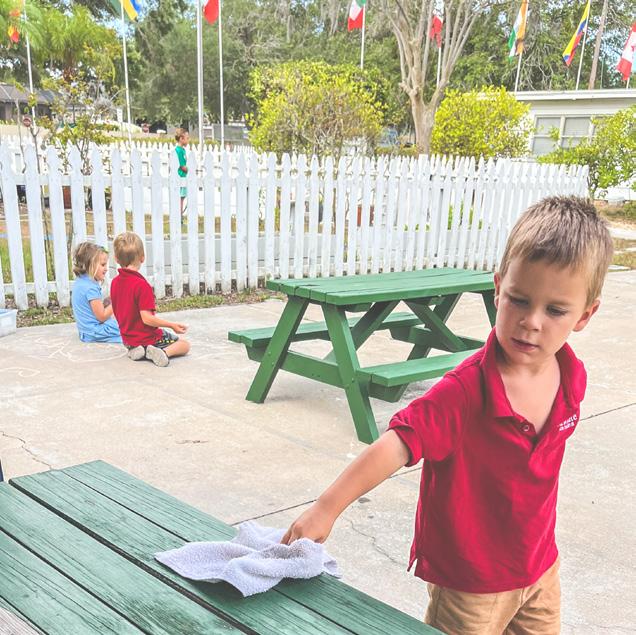

As a Montessori parent and guide, I can say with confidence that investing in a Montessori education is an investment in peace education to raise a citizen of the world. Maria Montessori once said, “Peace is what every human being is craving, and it can be brought about by humanity through the child.” A flower cannot blossom without sunshine, and in our classroom, sunshine is peace, and the children blossom.
Children learn peace through the continuous lessons in grace and courtesy, which is the foundation on which the classroom flows. Montessori guides focus on the child as a whole. We look at the emotional, social, and physical factors of the individual child. Grace and Courtesy lessons are the backbone of Montessori education and one of the main ingredients in building a Montessori child, but what does Grace and Courtesy mean, and look like, in the Montessori environment?
Grace and Courtesy lessons, along with guiding moments, are daily activities involving personal interactions, where children show consideration, empathy, and politeness toward themselves and others by using respectful language and manners.


Some examples of Grace and Courtesy may include: Saying “excuse me” while walking close to someone; washing hands before eating; properly unpacking a lunchbox; knocking on the door before entering the restroom; asking to join an activity politely; carrying a chair

safely; properly greeting a visitor; or properly disposing of food or trash after eating. You may see a child completing an activity, politely blowing their nose, learning to sneeze by turning away from people, learning to wait for a turn, and peacefully engaged in solving a disagreement. The list can be endless, and there will always be opportunities to engage the individual child, or the whole class, in a Grace and Courtesy moment or lesson.
Maria Montessori wrote about the first plane of development, which takes place from birth to age six. Around two and a half years of age and up to six years of age, the child leaves behind the stage of infancy and self-immersion and becomes more sensitive to social interactions with peers as well as adults. A child’s mind is like a sponge, and it has the capacity to absorb a great deal from its surroundings. During this time the child shows a significant inner need for order to make sense of his environment and learn how to interact appropriately with others.
If you’ve lived and/or worked with small children, I am sure you have noticed how they respond to changes in routine. I remember a time in the classroom when we were singing the same song we always sing before eating lunch, and one child happened to be in the bathroom at that moment. When he came out of the bathroom, he was very upset that he had missed the lunch song. In this plane of development, children can become easily frustrated if they notice another individual not following directions: “Look at how Isabella is carrying her rug and work at the same time!” These moments are the best opportunity to demonstrate to children how to navigate their shock and disappointment with grace.
During the first plane of development, the window of opportunity is open for the child to absorb lessons on Grace and Courtesy effortlessly and for these graces and courtesies to become a part of the whole child.
TOMORROW'S CHILD © § SEPTEMBER 2023 § WWW.MONTESSORI.ORG 13
As a parent and/or guide, how can we help children assimilate these lessons?
It is ideal to observe the child and promote positive behavior. For example, if you notice that the child is cleaning his room, you might say, “I can see that you cleaned your room, I bet you like knowing where to find everything.” It is always better to promote good behavior than to give negative attention such as, “Your room looks messy again.”
Most importantly these lessons always need to be consistent and clear. For example, if your child keeps getting up from the table during lunch, you need to model the behavior you wish to impart and stay seated while eating. Acknowledge the progress that your child makes. You might say, “It was nice having a good meal all sitting down together.” Keep the expectations consistent, changing them can be confusing and may send mixed messages to your child. If you allow your child to get up every now and then, you are basically saying this behavior is acceptable.
In our classroom, we welcome all opportunities to guide children to assimilate these graces and courtesies, guiding them to learn ways to conduct themselves in everyday society. It is vital for children to develop the appropriate social skills to be able to manage conflict resolution, cope with emotions, handle stressful situations; and be a good citizen of the world.
“It is the child who absorbs material from the world about him; he who molds it into the man of the future.”







 Maria Montessori, The Absorbent Mind
Maria Montessori, The Absorbent Mind

Alexandra “Alex” Gallen is a primary guide at NewGate Montessori School. Alex earned her BA in Psychology from the University of South Florida and is certified in Early Childhood from the Montessori Accreditation Council for Teacher Education (MACTE). Alex is originally from Lima, Peru; she moved to Florida in 2001. Alex taught Spanish for several years before getting Montessori certified and enjoys integrating Spanish into her lessons. Alex first came across the Montessori Method while looking for schools for her children, and she made it her mission to raise her three children this way.

This updated edition of the popular course, The Parenting Puzzle, led by Lorna McGrath, shares the secrets of Family Leadership—the Montessori way. Over the course of five weeks, Lorna provides strategies and practical examples that you can use right away to bring peace and ease into your home, creating a haven for the whole family, where power struggles fall away and give rise to joy.
Discount for MFA members. Now offering a monthly payment plan.
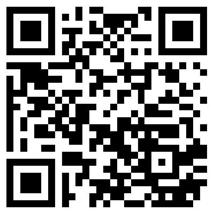
TOMORROW'S CHILD © § SEPTEMBER 2023 § WWW.MONTESSORI.ORG 14
.
REGISTER OR LEARN MORE tinyurl.com/parenting-puzzle-2
Peacing it all together.
The Art of Observation
A MONTESSORI MOM'S GUIDE
Hello fellow Montessori parents, I'm Sarah, a seasoned Montessori mom. As parents, we've experienced the joy, curiosity, and sometimes even a bit of confusion that comes with the Montessori journey. I remember the first time I was invited to observe my daughter Gabriella's class, I was both excited and unsure about what to expect. Over the years, I've learned that these observations offer a unique window into our children's world, and I'd love to share my insights with you.
MY JOURNEY AS AN OBSERVER
The first time I visited Gabriella's Montessori class, I was instructed to sit in the designated visitor's chair and observe. At first, it felt a bit strange, sitting in a bustling room full of children, quietly watching. However, with time, I realized the importance of being a silent observer and allowing the class to carry on with its regular routine.
GUIDANCE THROUGH OBSERVATION
Over the years, I've developed a keen eye for certain elements during my visits. Here's what you might want to look for:
Classroom Layout: The first thing that struck me about the Montessori classroom was its child-centric design. Notice how everything, from the activities to the furnishings and shelves, is within a child's reach, encouraging independence.
Adult-Child Interactions: The teacherstudent relationship in a Montessori classroom is distinct. Watch how teachers guide rather than instruct, fostering a respectful and nurturing environment.
Montessori Materials: Pay attention to how the children interact with the Montessori materials. Seeing Gabriella drawn towards certain activities helped me understand her interests and aptitudes better.
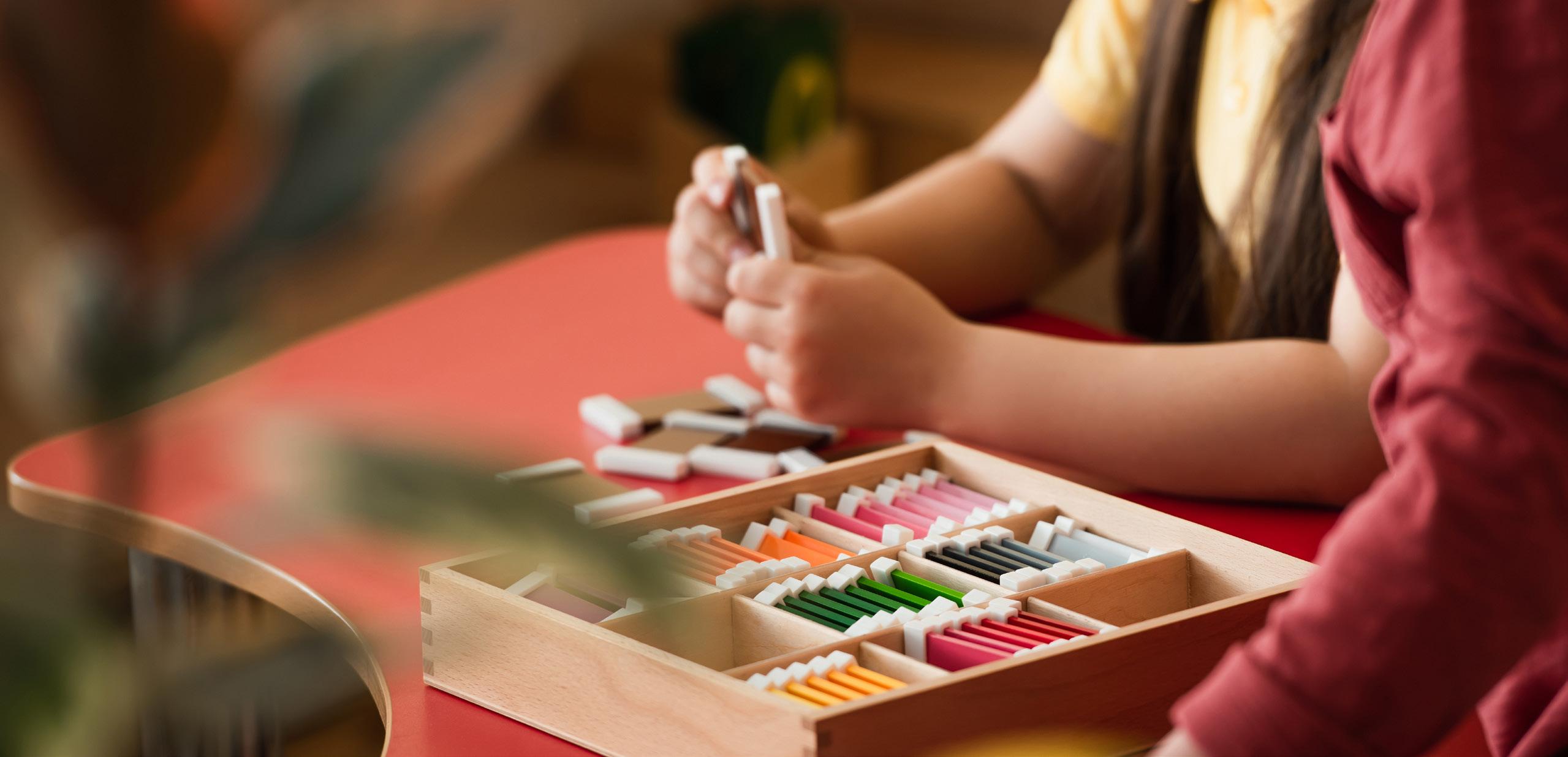
Peer Learning: One of the beauties of Montessori education is peer learning. Watching older children guide the younger ones was a heartwarming experience.
Self-correction: Another striking Montessori principle is self-correction. Watching children correct their own work instilled in me a great respect for the Method and helped me trust Gabriella's problem-solving abilities more at home.
WHAT I LEARNED AS A MOM
My best advice to you would be to schedule your visits ahead of time with your child's teacher. This way, the class remains undisrupted, and you get to see an authentic day unfold in the Montessori environment. I found that it's also crucial to give the younger ones a bit of time to settle into their new routine at the start of the school year before planning a visit.
Child's Workflow: Choose a child and follow their work pattern for a while. Observing Gabriella taught me that every child has a unique pace and method of learning. This understanding has helped me become more patient and supportive as a parent.
Teaching Methods: Observe how lessons are imparted to individual students or small groups. I was amazed to see how the teachers adjusted their teaching style according to each child's needs.
Observing Gabriella's Montessori class transformed me as a mom. I learned the importance of patience, trust, and respect in guiding my child's development. I discovered how to encourage Gabriella's independence, help her follow her interests, and foster her problem-solving skills. This understanding has helped me create a nurturing environment at home that aligns with her Montessori experience.
Remember, observing is not about scrutinizing every detail; it's about gaining insights into your child's learning journey. I hope my experiences will guide you on this beautiful path of observation. Happy observing!
TOMORROW'S CHILD © § SEPTEMBER 2023 § WWW.MONTESSORI.ORG 15
by Friends of the Montessori Family Alliance
…I REALIZED THE IMPORTANCE OF BEING A SILENT OBSERVER AND ALLOWING THE CLASS TO CARRY ON WITH ITS REGULAR ROUTINE.
Spotlight on MontessoriSpotlightSchools on Montessori Schools




There is no need for words, is there? The pictures below tell you exactly how our stu dents felt about the beginning of the 3 Mariposas Montessori Summer Program in Cab arete, Dominican Republic, this summer. For more information about this school, visit their website at 3mariposasmontessori.com
3 Mariposas offers Montessori from early childhood through the elementary years.




“Let the children be free; encourage them; let them run outside when it is raining; let them remove their shoes when they find a puddle of water; and, when the grass of the meadows is damp with dew, let them run on it and trample it with their bare feet; let them rest peacefully when a tree invites them to sleep beneath it's shade; let them shout and laugh when the sun wakes them in the morning as it wakes every living creature that divides its day between waking and sleeping.




— The Discovery of the Child, Maria Montessori.

TOMORROW'S CHILD © § SEPTEMBER 2023 §
16
3 Mariposas Montessori Cabarete, Dominican Republic


The Montessori Foundation would love to highlight your child's Montessori school or their summer activities. Send high-resolution photos and a brief story or description along with a "permission to publish."












TOMORROW'S CHILD © § SEPTEMBER 2023 § WWW.MONTESSORI.ORG 17
*
*
*
*
Saturdays in the Nido at Magnolia Montessori
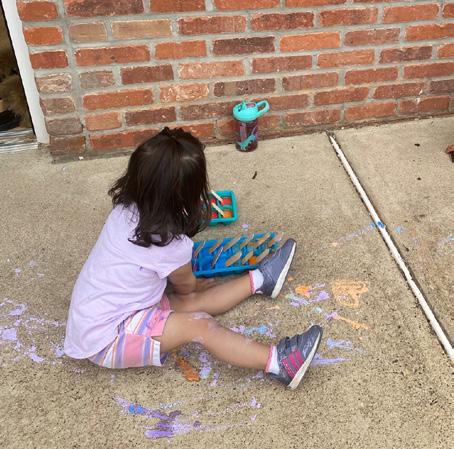

 by Allison Gerlach
by Allison Gerlach
Editor’s Note: Although Montessori’s Nido program is not offered at all Montessori schools, it is specially designed for infants.

Relationships,
collaboration, and community are pillars of Montessori Nido programs. As an infant guide, I know that secure attachment with children under the age of three lays a foundation for social and emotional wellness for the rest of a child’s life and I am equipped from my training to gracefully accomplish this heavy feat within the classroom. I also know that parent partnerships are equally important to the success of my students, but the reality of working parents and Covid restrictions have made this challenging. In a post-pandemic world, the task of reconstructing communities is made harder by the difficulties for people who are adjusting to the new experience of parenthood. This is something that I sought to support for the parents of my students this school year.
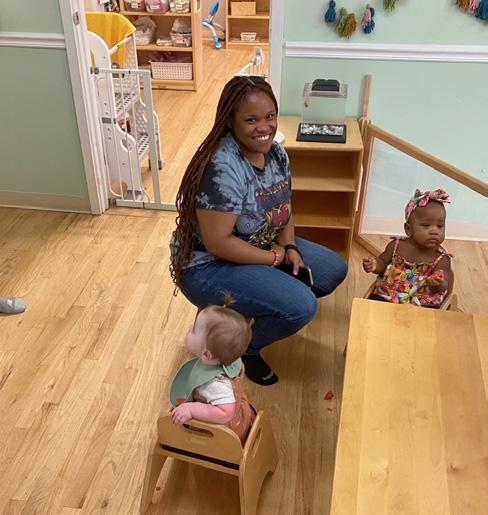

I decided to find a way to connect the parents not only with the school and teachers but also with each other. The time constraints of the school day were simply not conducive for this task, so I sent out a poll to my parent community and asked if they were interested in gathering together and when they were available for such a thing. The consensus was a Saturday afternoon and 100 percent confirmation that they would love an opportunity to get together! So I set out to organize a once-a-month social for all the families in my classroom. On the first Saturday of every month at 1:30 pm, I open my classroom for an hour to any family or assistant teacher who is free and interested to join me. I organize a simple developmentally appropriate activity such as art exploration, music time or a sensory experience that can easily be recreated at home. I prepare the environment like I would for any normal day and open the doors.
The first month I made some pumpkin applesauce and was met by two families on the playground. They chatted together with each

other about the school, their children, and the trials of parenting toddlers and infants, all of whom attend our school. The parents asked me casual questions about their child’s interest in trying new foods at school, like the pumpkin applesauce, and even noted how amazed they were at the capabilities of their infant on our playground structure as their nine-month-old climbed up the stairs and slid down the slide all on her own. “I didn’t know she could do that!”
With each month more families joined, and after each event, I received multiple emails thanking me for taking the time out of my weekend to open the classroom to them and for connecting them with other families. It is so wonderful to watch the classroom full of activity between parents and their own child and families who have so much in common but no other time to connect. I also felt so privileged to watch my students amazing their parents each time with their capabilities and independence. The home environment is so different from that of a Montessori classroom for many reasons, but these events helped me to think of ways to share the philosophy and make it accessible to young families. I will be continuing my Saturdays-inthe-Nido tradition, and I invite you all to try it in your Montessori environment too!
Allison Gerlach is the Lead Directress and Infant/Toddler Coordinator at Magnolia Montessori School (Whitehouse Station, NJ). She will be completing her Bachelor’s Degree in Early Childhood Administration from Purdue Global University this year, holds an Associate’s Degree in Education (P-12) from Raritan Valley Community College and also completed her Infant/Toddler Montessori certification in 2021 from West Side Montessori School.

TOMORROW'S CHILD © § SEPTEMBER 2023 § WWW.MONTESSORI.ORG 18
 by Tim Seldin, President, The Montessori Foundation
by Tim Seldin, President, The Montessori Foundation
Joyful Learning
Montessori for the Elementary Years
After having your children in Montessori for the initial Early-Childhood (3-6) years, you've probably seen them grow into independent, confident, and curious learners who genuinely love school. And guess what? The six years of the Elementary program can unlock even more potential.
We have asked some veteran Montessori educators, a parent, and a sixth-grade student to share their views about the Elementary Montessori journey, which you may find valuable.
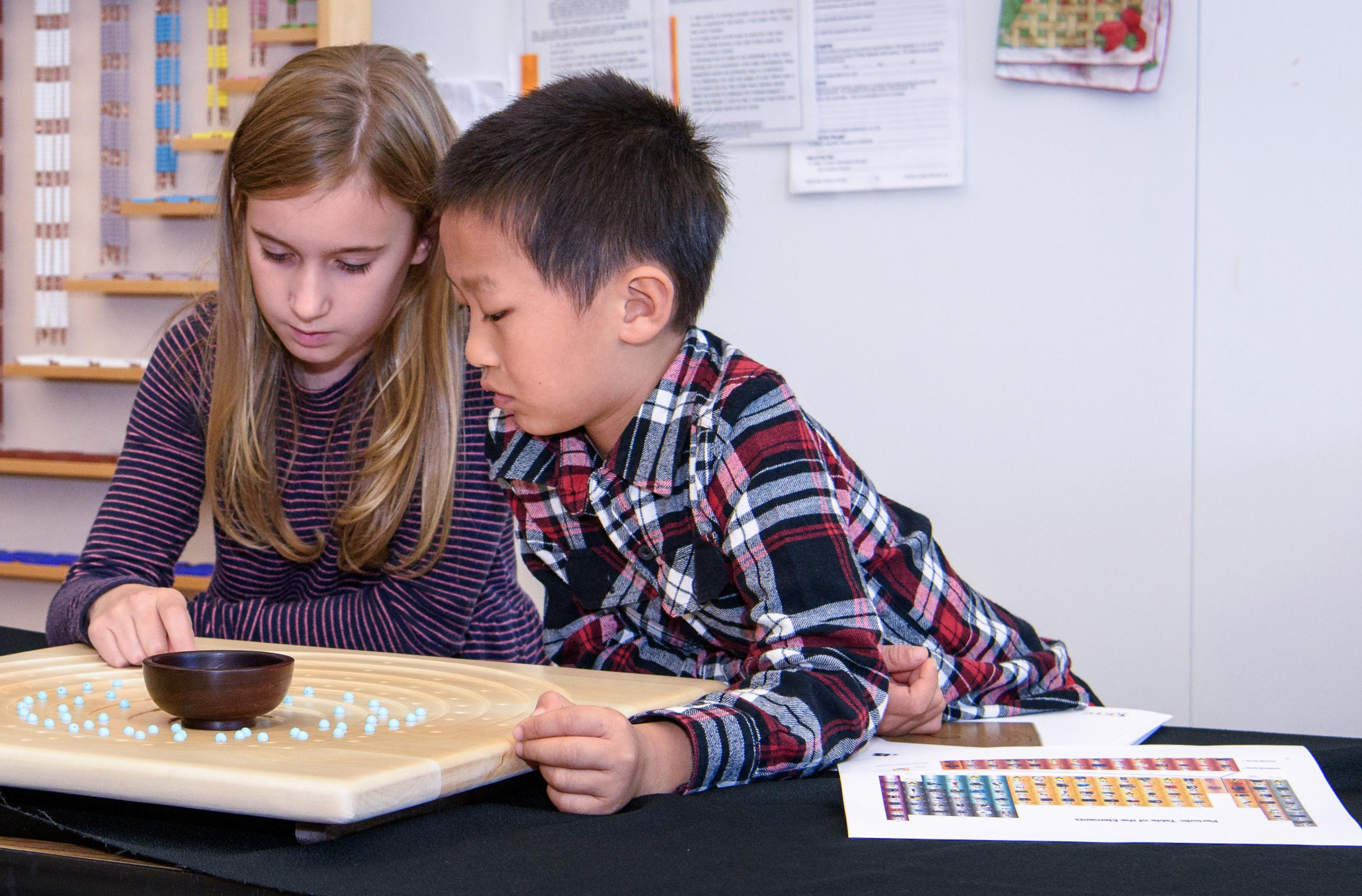
Let's begin with Val, a Montessori educator.
She explains, “One of the things you see when you enter an Elementary classroom is joy, excitement, and enthusiasm. These are not children who are given papers and workbooks day after day. These children are allowed to take some opportunity to be engaged.
Montessori teachers are not simply teachers. They are mentors, friends, and guides. They are also storytellers. To introduce a lesson, they develop a whole story and draw the children in.”
Our Montessori student, Will, added:
"The best part about our teachers is they are not always using textbooks. We learn from first-hand experience. So we tend to learn things that we wouldn't ordinarily learn from a book."
Academics
The Elementary Montessori curriculum is engaging and sophisticated. It requires teachers to have a broad and thorough education of their own. The curriculum is divided into three core elements.
The first focuses on mastering fundamental skills and basic core knowledge. This includes studying mathematics, science, technology, literature, geography, history, economics, and anthropology. It also covers conventional curriculum basics, such as: math facts; spelling lessons; the study of vocabulary, grammar, sentence analysis, creative and expository writing; and library research skills.
The second crucial part of the Montessori curriculum are the Great Lessons. These are
TOMORROW'S CHILD © § SEPTEMBER 2023 § WWW.MONTESSORI.ORG 20
captivating stories, experiences, and research projects that explain how the world came to be: the development of life on Earth; humanity's history; and the evolution of our language, writing, mathematics, and technology. The Great Lessons spark imagination, giving children a cosmic perspective of the Earth and humanity's place in the universe.
Lastly, the Montessori curriculum encourages individually chosen research. This largely involves library research rather than textbooks, allowing children to gather information, prepare reports, teach their peers, and assemble portfolios. As they progress, their presentations and research reports become more sophisticated and complex.
Hands-On Learning with Montessori Materials
Learning continues to be a hands-on experience in Montessori Elementary classrooms. Children explore through discovery. At this level, the Montessori learning materials advance to more abstract concepts in mathematics, geometry, and pre-algebra.
Val explains, "The learning materials used in the Elementary program are really engaging. After hearing an exciting story about the universe from the teacher, the child can embark on various research projects at their own pace. This excitement and connection with the environment is where true learning happens - and that's where Montessori really shines."
Bill, a Montessori parent, adds, "What I loved about Montessori was how the teachers encouraged the kids to choose their daily focus areas. If the child showed special interest in a topic, teachers would support them even if that interest stretched over a week or two."
One of the best things about Montessori is that it encourages children to think for themselves. It teaches them how to learn – to not simply memorize and forget. They learn that learning can and should be as natural as breathing.
An Integrated Curriculum
In Montessori, subjects are not separated into silos, such as geography, math, and science. Instead, they interweave into each other, providing an interconnected learning experience.
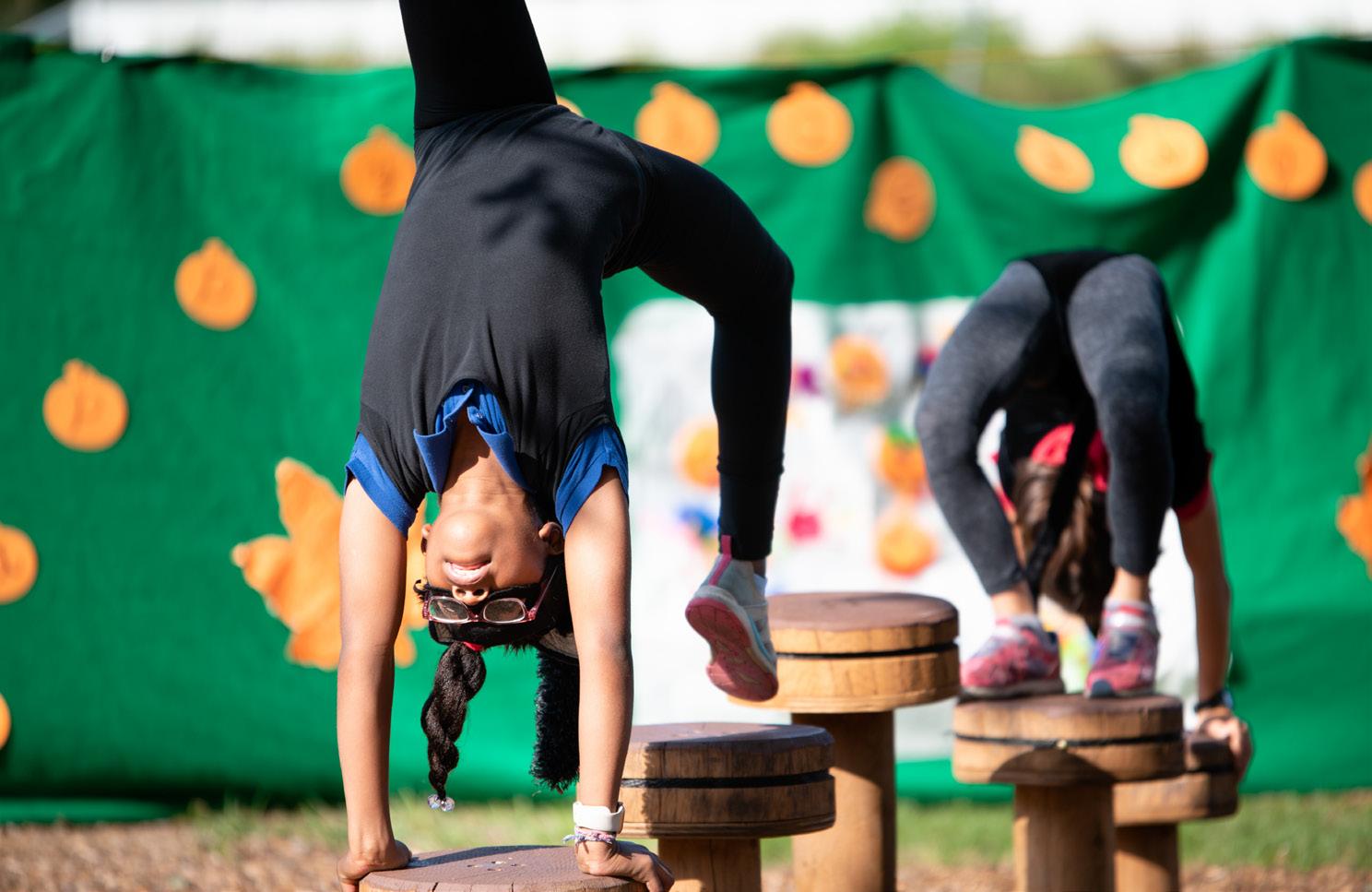
Marsha, another Montessori educator, explained how this works. "For example, when studying the history of our state, we look at how it evolved over time. But to truly understand this, we also explore the geography, the environmental resources, the geology of rock formations, and the local ecosystem. History and science are seamlessly linked—it's all interconnected."
Language Arts and Humanities, Mathematics, and History & Geography
Language Arts and the Humanities: The Elementary Montessori Language Arts program stresses developing strong composition and creative writing skills. Students are asked to write continuously, emphasizing, at first, the development and enjoyment of the writing process rather than the strict use of correct grammar and spelling.
math program includes all of the basics that a child needs in order develop further to the next level of algebra, geometry, trigonometry, and calculus.The computer is another key tool used in many Elementary classes for research and the development of compositions.
History and Geography: One of the key objectives of the Elementary Montessori program is to give children a global perspective and help them see their place in the history of humanity. One of the most wonderful things about this cultural area of our curriculum is that it weaves facts together, makes them come alive, and integrates all the studies. From the youngest Elementary grades, children are learning to look at a culture, past or present, from many perspectives. They study the environment, the climate, the look of the land, the food the people would have eaten, how their shelters and houses were built, and how they transported things around the countryside.
However, formal grammar, spelling, and sentence analysis are taught systematically. The key to the Elementary Language Arts curriculum is the quality of literature the children read. They're introduced early to great children's books and fascinating works on science, history, geography, and the arts.
Mathematics: Mathematics in Montessori education is based on the European unified math model. This introduces Elementary students to the study of the fundamentals of algebra, geometry, logic, and statistics, along with the principles of advanced arithmetic beginning at the age of six or seven The Elementary
You might have a small group of students interested in Greek mythology who build a model of ancient Athens or make and decorate replicas of vases to illustrate a particular story, or they might prepare a diorama of a theme from mythology, or write and produce a play for the rest of the class.
Practical Economics is another important element in the Elementary Montessori curriculum. Students learn how to compare prices against value. They compute costs, maintain checkbooks, operate small school stores, and get introduced to the stock market.
TOMORROW'S CHILD © § SEPTEMBER 2023 § WWW.MONTESSORI.ORG 21
Citizenship: Students study the work of local, state, and federal governments and begin to follow current events. During election years, they might meet candidates and discuss the issues of the day, and sometimes they will even volunteer on the campaign of a local candidate of their choice.
Science: The Montessori science curriculum is focused on studying life, the laws and structure of the universe, and how humanity has sought, throughout history, to put our understanding to practical use.
Val wrote: "Montessori has a gift for science. Science is a participatory thing in Montessori. The child is not just told why things are the way they are; she's allowed to explore why things are the way they are. She's allowed to utilize chemicals and processes that maybe one of the first scientists used to reestablish how those things are brought about."
Kenna (another Elementary Montessori educator) adds: "There are also many science experiment cards on the shelves and children can conduct step-by-step experiments. Students learn to observe and record what takes place during their experiments. The goal is to teach both the scientific method and techniques for safely working with scientific equipment."
The Montessori Child
The Montessori Elementary classroom functions as a community where children learn social skills, courtesy, conflict resolution, and ethical behavior. It provides a platform for children to work together, acknowledge each other's contributions, and develop a sense of justice and moral reasoning.
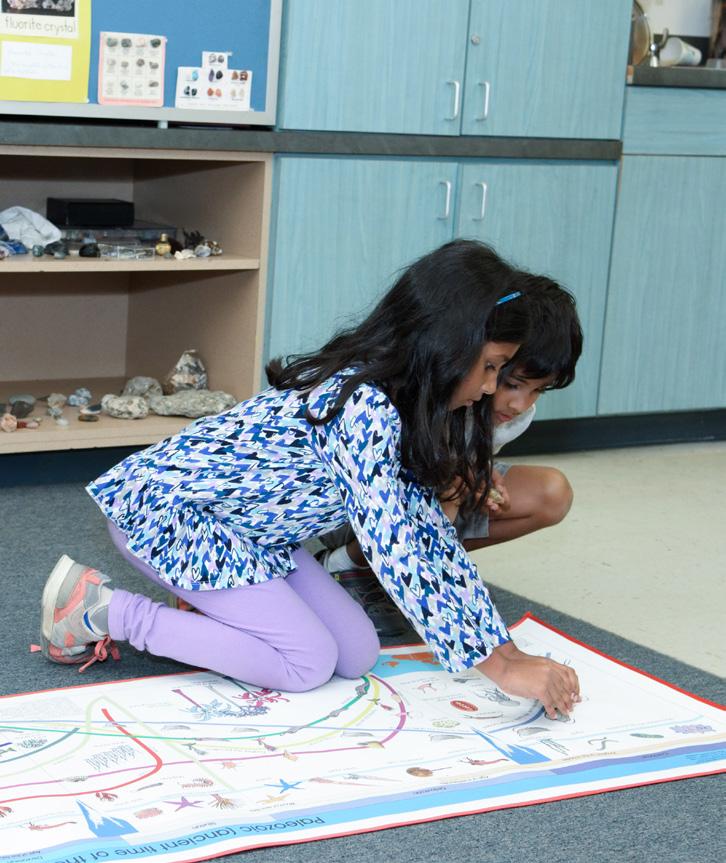
Students actively explore questions of social justice, human rights, aid to the needy, and global peacebuilding. They engage in community service projects, gaining a sense of responsibility and social consciousness. Montessori nurtures children into flexible, self-disciplined, independent learners and self-actualized adults.

Kenna: "We're trying to develop children who can solve problems and find information on their own. They learn to address conflicts peacefully. That's what we aim for in our Elementary program."
Bill adds: "The respect level between the kids in Montessori is very different from what my daughter experienced in a traditional public school. Montessori always fosters a sense of community."
Conclusion
Montessori's Elementary program offers a unique educational experience that nurtures academic excellence, character development, global understanding, and community service. By focusing on the individual needs and interests of each child, Montessori prepares students for a lifelong love of learning, equipping them with the skills necessary to thrive in an interconnected world.
If you want your child to love learning, then you're on the right track with Montessori.
Tim Seldin is President of the Montessori Foundation and Chair of the International Montessori Council. His more than 40 years of experience in Montessori education includes 22 years as Headmaster of the Barrie School in Silver Spring, Maryland, his alma mater from toddler through high school graduation. Tim was Co-Founder and Director of the Institute for Advanced Montessori Studies and the Center for Guided Montessori Studies. He earned a B.A. in History and Philosophy from Georgetown University, an M.Ed. in Educational Administration and Supervision from The American University, and his Montessori certification from the American Montessori Society. Tim Seldin is the author of several books on Montessori Education, including How to Raise An Amazing Child and The World in the Palm of Her Hand. Look for his new book, Montessori for Everyone, co-authored with Lorna McGrath.

TOMORROW'S CHILD © § SEPTEMBER 2023 § WWW.MONTESSORI.ORG 22
By focusing on the individual needs and interests of each child, Montessori prepares students for a lifelong love of learning, equipping them with the skills necessary to thrive in an interconnected world.
Iwas just a youngster coming out of preschool, knowing only the basics. I first entered Montessori schooling at the mere age of four. I didn’t know then that it would change my life forever. Everything from the environment to the people was much different than I had experienced elsewhere. As a young learner, Montessori provided me with hands-on education and Practical Life skills. From Elementary through Middle School, I learned many essentials like how to play the recorder and piano or tend to a garden, becoming a well-rounded student early in my years.
The Montessori Primary program completely shaped my future as a person.

Throughout my Montessori learning experience, one thing has stuck with me through the years: involvement in a variety of places. I have gone on all sorts of different trips and
REFLECTIONS OF A MONTESSORI GRADUATE JACOB ANTZCAC, NEWGATE CLASS OF 2023

had so many experiences, from the many plays and performances I’ve seen, to surveying local waters to calculating seagrass percentage. I have found interest in all kinds of topics solely because I was exposed to them. Montessori helped me to pursue an internship outside of school. I earned more freedom and the opportunity to research marine life in the field without any academic restrictions.
Montessori also allowed me to interact with a more diverse cast of people and personalities. Throughout all of my years, I never had a class with students who were just my age. Starting in first grade, I attended classes with people in their third year of Elementary school while going on trips and having some classes with students through high school. Even now, in my senior year, I’m grouped with juniors in many of my courses and planning events through the student council, which even middle schoolers can attend. Community played an exceptionally important role in my Montessori experience.
Finally, I benefited the most from Montessori’s freedom. I have already touched a bit on the freedom I was granted through my extracurriculars, but there is more to it than just being able to find opportunities.
Growing through this environment, I was trusted, and my voice was actually heard when I spoke up. If I ever thought something needed to be changed or wanted to try something new, I could voice my opinion. I put my own personal spin on projects I made or papers I wrote. I simply applied my own interests to my coursework.
I’ve grown up in Montessori almost my whole life and couldn’t imagine being somewhere else. I’m sure there are some quirks and perks of having a different education, but Montessori definitely fit me best. On top of the freedom, community, and different experiences, I can’t ask for much more.
Going off to college excites me, and I have already sustained advanced and professional class structures. Montessori has prepared me for the next stage of my life through all that I have done. All my years have molded me into the person I am today, and I’d like to believe I’ve done a pretty good job.

TOMORROW'S CHILD © § SEPTEMBER 2023 § WWW.MONTESSORI.ORG 23
THE MONTESSORI PRIMARY PROGRAM COMPLETELY SHAPED MY FUTURE AS A PERSON.


TOMORROW'S CHILD © § SEPTEMBER 2023 § WWW.MONTESSORI.ORG 24 CLASSIFIEDS Visit our website for a complete list of opportunities, updated daily. Ads can be placed year-round. IMC members get one free advertisment. For non-members, a classified ad costs $2 per word ($50 minimum). Visit www.montessori.org/the-international-montessori-council-imc/ to find out about IMC membership. To place a classified ad on our website contact, Don Dinsmore at dondinsmore@montessori.org. www.montessori.org/classified-ads VISIT US ONLINE
As a parent, one of the most common questions you might ask your child after school is, "So, what did you do at school today?" Often, you might be met with replies like, "Nothing" or vague responses about daily activities, such as playing with clay or spooning beans. Rest assured, your child is engaged in various developmental activities at school, even if they don't explicitly share them.
Young children, in particular, might have difficulty articulating their day-to-day school activities. The wealth of activities and the unique names of Montessori materials, such as the Trinomial Cube or the Addition Strip Board, can all be overwhelming to remember and express.
Moreover, the Montessori learning experience is predominantly hands-on, involving manipulative materials that promote critical thinking, creativity, and problem solving. Thus, your child might not bring home many papers or projects depicting their work, but that doesn't mean they're not learning and progressing.
Engaging with Your Child's Montessori Experience
• Ask specific questions: Instead of a generic inquiry, ask specific questions, such as: Did you do a counting lesson today? or Did you work with colors or build a tower?
• Visit the classroom: Occasionally, you can take your child into the classroom at dismissal so they can show you their favorite activities. Be mindful, however, of the teachers' end-of-day responsibilities.
• Classroom observation: Set up a time to observe your child in class to get a firsthand understanding of their learning environment.
Your Child's Montessori Journey: navigating
From Daily Activities to Creating a Conducive Environment at Home
by Montessori Staff Writers
• Teacher interaction: Connect with your child's teacher for insights into your child's progress. You can have informal discussions or schedule formal parent-teacher conferences.
• Montessori literature: Reading a book about Montessori education (or Maria Montessori) can help you understand the teaching methodology and align your expectations.
• Participate in school events: Attend school meetings and workshops to stay connected with the school community.
• Play school at home: Children often mirror their school activities during play, giving you a glimpse into their learning experiences.
• Patience is key: With time, your child's growth and learning will become more evident.
Supporting Your Child's Montessori Experience at Home
Witnessing the independence and responsibility of children in a Montessori environment might prompt you to wonder, "How can I foster these qualities at home?" While home should be a more relaxed space, you can apply certain Montessori principles to create an enabling environment for your child at home. Here are some suggestions:
• Encourage independence: Provide stable stools to help your child reach items of personal use. Arrange clothes on low racks and organize everyday dishes and nutritious food items within their reach.
• Household chores: Involve your child in tasks like laundry, unloading the
dishwasher, and cleaning up their messes. Even simple tasks help foster a sense of responsibility.
• Organized play: Arrange toys, art supplies, and books on reachable shelves, and rotate these items to maintain their interest. Organize like items together in an attractive manner.
• Personal space: Provide a space for your child's activities in every room. Create a self-quieting corner for them to retreat to when they need to calm down.
• Room redecoration: Older children can be invited to help redecorate their rooms, fostering a sense of ownership and decision-making.
• Monitor screen time: Limit TV and computer time, promoting more engaging and creative activities.
• Reading: Irrespective of their age, reading to your child is an enriching experience.
• Emotional communication: Talk about feelings with your child, promoting emotional intelligence.
• Use natural consequences: Rather than imposing punishment, allow natural consequences to teach your child about the effects of their actions on themselves and others.
Creating an environment that mirrors the Montessori principles at home can reinforce your childs learning and growth. This supportive atmosphere, coupled with understanding and patience, will ensure your child cherishes their Montessori journey while developing essential life skills.
25
TOMORROW'S CHILD © § SEPTEMBER 2023 § WWW.MONTESSORI.ORG
Montessori in Your Home: The Kitchen
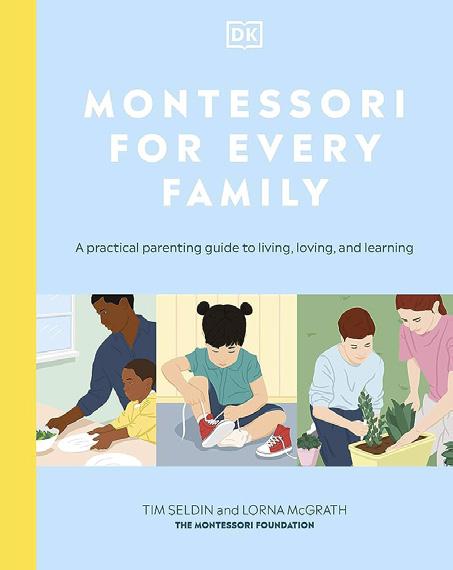 by
by

Thekitchen is often the hub of family life, a place where family members gather to prepare food, to talk, and to be close to one another. Young children, in particular, enjoy helping out in the kitchen and spending time with parents while they work there.

Easily accessible plates, cups, bowls, and eating utensils encourage independence in your young child.
Ages and Stages
18 months–6 years: Place items in reach so even very young children can help prep, independently get food for themselves, and clean up. As impulse control and coordination grow, use childsized ceramic plates, glasses, and metal cutlery. (Use a butter knife until about the age of four.)
6–12 years: Your child can help with simple cooking tasks. Teach them about basic nutrition, cleaning surfaces and utensils, and safe food storage.

12–18 years: Teens can help with meal planning, grocery shopping, cooking, and cleaning.
Tips for Your Kitchen Home Environment
• Create an accessible space: Organize the kitchen to assist and encourage your child to develop the everyday skills that allow them to be helpful and become independent. When everything has a place and is accessible, you create a sense of order that helps your child navigate the kitchen calmly and confidently. Working together to prepare meals and clean up not only helps your child develop useful life skills, but also creates a family community. For young children, simple adjustments make it easy for them to help out.
• Set aside a low refrigerator shelf to store prepared drinks or a small jug of water, fruit, and ingredients for sandwiches and snacks. Allowing your child to help themselves to a snack or drink teaches them self-regulation.
• Use nonbreakable containers for peanut butter, jams, and spreads so your child can successfully get out and put away ingredients while they are working on holding and carrying skills.
• If space allows, a child-sized table and chair allows young children to set up and eat their food independently.
• Put plates, cups, and napkins in a low cupboard or on a low shelf. Store cutlery in a low drawer or basket. Ideally, use child-sized metal cutlery, ei-
Lorna
ther custom made or smaller items from your set. Using unbreakable plates and cups until 3 to 4 years of age helps children gain skills confidently and safely.
• Prepping and cleaning-up tools include a sturdy stool or a set of small, stable steps that allow a young child to help wash up or prep food at a counter. Show your child how to wipe the counter after use to instill this habit for life. A child-sized broom, dustpan, and mop will mean that, from a young age, your child can help clean the kitchen floor.
McGrath, MEd, is Director of IMC School

Accreditation, Program Director of the Montessori Family Alliance, and Senior Consultant of The Montessori Foundation. Lorna has 41 years of experience in the field of education, teaching children from 18 months through 6 years old and from 12 through 18 years old in both public schools and independent Montessori schools. Lorna is a Montessori teacher educator, conference presenter, and school consultant. She can be reached at lornamcgrath@montessori.org.
Tim Seldin is President of the Montessori Foundation and Chair of the International Montessori Council. His more than 40 years of experience in Montessori education includes 22 years as Headmaster of the Barrie School in Silver Spring, Maryland, his alma mater from toddler through high school graduation. Tim was Co-Founder and Director of the Institute for Advanced Montessori Studies and the Center for Guided Montessori Studies. He earned a B.A. in History and Philosophy from Georgetown University, an M.Ed. in Educational Administration and Supervision from The American University, and his Montessori certification from the American Montessori Society. Tim is the author of several books on Montessori Education, including How to Raise An Amazing Child, and The World in the Palm of Her Hand. Look for his new book, Montessori for Everyone, co-authored with Lorna McGrath.

TOMORROW'S CHILD © § SEPTEMBER 2023 § WWW.MONTESSORI.ORG 26
CURATED FROM...
Tim Seldin and Lorna McGrath, an excerpt from Montessori For Every Family, published by DK Press, © 2021
A practical guide to living, loving, and learning, at home! Order your copy of Montessori for Every Family today! Scan the code below:
Attributes of Montessori Children
by Cathie Perolman
DEAR CATHIE— WE HAVE BEEN STRUGGLING WITH BEDTIME AND GETTING OUR CHILD TO SLEEP EVER SINCE HE WAS BORN. EXHAUSTION IS JUST A MATTER OR COURSE IN OUR FAMILY. IT IS SO HARD TO GET OUR CHILD TO GO TO SLEEP WITHOUT ME OR HIS OTHER PARENT SPENDING HOURS WITH HIM AND RUSHING TO HIS SIDE IF HE WAKES DURING THE NIGHT. AS HE GETS OLDER AND GOES TO ELEMENTARY SCHOOL, WE WOULD REALLY LIKE TO FIGURE THIS OUT AND TEACH OUR CHILD TO SLEEP SO THAT WE, AS PARENTS, CAN HAVE SOME TIME TOGETHER ONCE AGAIN.
— A WEARY SET OF PARENTS
Dear Parents,
Thank you for reaching out with this difficult yet common challenge. I am happy to recommend Dr. Lynelle Schneeberg’s book, Become Your Child’s Sleep Coach, as my favorite resource. Her book is clear, readable, and practical. And while I will share a few highlights, I highly recommend you read the entire book, which focuses on sleep challenges for families with children ages 3-10. She recommends developing a fairly simple routine around bedtime that is consistent for all caregivers. Some children have a variety of adults in their lives, who are involved in their bedtime routine, and it is critical that all follow the same bedtime routine.
that turns off later from the child’s room, such as a white noise machine. (A white noise machine that stays on all night is fine.) The routine is clear, consistent and streamlined.
Add to the child’s room:
a single bedtime buddy (lovey)
a bedtime basket (filled with books and other non-electronic things to do in bed while the child is becoming drowsy)
3 ‘bedtime tickets’ (These can be used for a trip out of bed if necessary. If they are not used, they can be cashed in for a prize the next morning. The number will decrease over time.)
a reading light
a nightlight
Create a Clear 5-Step Bedtime Routine
The actual bedtime routine is simple and routine.
bedtime bite (encourage a healthy snack including complex carbohydrates eaten only in the kitchen.)
Create a visual chart for this 5-step routine so they are clear to your child. There is a chart to copy in the book.
Once all the steps of the routine are complete, your child is ready to fall asleep on their own. They may look at books or do other activities from their bedtime basket until they are drowsy. They may need a parent to stay near them, but do not interact with them as they transition to this step. The child may get up to go to the bathroom, but each time they get up it costs them a bedtime ticket. Be matter of fact, and do not interact with your child during this time.
Your goal is for the child to learn to fall asleep alone after
completing the bedtime routine. Dr. Schneeberg speaks about making the things necessary to sleep simple, such as those they would take to summer camp.
Remember that this process may take a few weeks to master.
Dr. Schneeberg provides more clarification and detailed explanations in her book and discusses special contingencies. She also shares case studies from her work with families and children or all ages. I am confident it will be helpful to you.
Best of luck helping your child learn to sleep alone.
Warmly, Cathie
Cathie Perolman is a reading specialist, Elementary educator, author, consultant, and creator of educational materials for Primary and Elementary students. Check out her new downloadable materials on her website cathieperolman.com.

Prepare the Child’s Room
The author recommends creating a sleeping environment that allows the child to put themselves to sleep independently. This environment will look the same when the child wakes up in the middle of the night so they can put themselves back to sleep easily. Remove all electronics, pets, and anything

bath or wash-up time and a change into pajamas
brushing teeth
bathroom (provide one last time to go to the bathroom)
books (read in bed with your child and their bedtime buddy. Set a timer for the end of this time or a number of books/ chapters you will read.)
For more than three decades, she has dedicated her energies to improving reading for all youngsters. She is the author of Practical Special Needs for the Montessori Method: A Handbook for 3-6 Teachers and Homeschoolers published by the Montessori Foundation (available through montessori.org.) She is a regular contributor to Tomorrow’s Child and Montessori Leadership magazines.
Cathie Perolman holds a BS in Early Childhood Education and a MEd in Elementary Education, with a concentration in reading. She is credentialed as a Montessori teacher. She is married and has two adult children and two adorable granddaughters. Cathie lives in Ellicott City, Maryland with her husband.
TOMORROW'S CHILD © § SEPTEMBER 2023 § WWW.MONTESSORI.ORG 27
DEAR CATHIE
What Is a Montessori Material?

We hear a lot of talk about the Montessori Materials, but what exactly are those materials? How do we determine if something ‘qualifies’ as being ‘Montessori’ or not?
There is a list of characteristics that must be considered when creating a Montessori Material. Dr. Montessori developed this list because she knew that science is always advancing. The materials she developed in the early 1900s would necessarily need to evolve as our understanding of the world and human development grew.
At the top of her list were the age and abilities of the student (from birth to dementia care). She knew that all materials must be sized to match the size of the humans they are designed to teach and be matched to the capacities of those humans. So, the materials will necessarily differ when used to teach young children as compared with adolescents or adults. Beyond that core, the material should have most (if not all) of the following attributes:
Self-teaching (auto didactic): In Montessori, we say that it is the materials that teach. The teacher (more commonly known as a ‘guide’) is there to inspire the child to use the material and show them how to use it. But it is not the teacher who teaches. It is the student's repeated, uninterrupted experience, using the materials towards their intelligent purpose, that leads to learning.
Control of Error: The material should allow the students to discover and correct their own errors without the need for teacher intervention. When an authority figure comes in and offers a correction, there is a chance that
this will trigger a stress response in the learner.
Think about when your boss or parent tells you that you are doing something wrong. How well can you hear that? But, if your friend tells you, it's usually not a big deal and is seen as helpful, right? So, in Montessori, we try to let the students discover and fix their own errors. Designing activities that allow students to recognize their errors without help is key. For example, the Three-Part Cards (developed by Maria Montessori) are a reading activity where students:
1. lay out an image of an object,
2. read a word label and match it to that image, and
3. use a control card (which includes the image and its name on one card) to check their own work. The control card acts as the control of error. So, if a student places the label ‘peach’ under a picture of a watermelon, the control card will show them that they are wrong. No one else needs to be involved. We learn so much more from seeing our own errors than from being corrected by others.
ically, the adult teacher/guide will show the student specific ways of using the material, but, sometimes, the student learns by watching other students or by receiving a lesson from another student. The key here is that there are specific ways of using the material towards an intelligent end.
For example, the Number Rods are lined up, aligned on the left, to help children learn about quantity and its connection with length (e.g., the one rod is incrementally smaller than the two rod and the three rod, etc.). If a child picks up a rod and uses it like a light saber, that is not an intelligent end! It's not helping the child to understand what it is that the material teaches. So, when we see a child do this, we might approach them and say, "I love Star Wars too! But the number rods are so special. We must use them for counting work. Let's carefully put this back, and I'll show you again how we use them.”
by Julia Volkman
emony where there is a place for everything and a logical sequence to follow to elegantly complete the activity. Memorizing and practicing this movement pattern strengthens the brain in innumerable ways.
Intelligent/Purposeful Uses: If you agree with the concept that the materials teach the student, then the student must have ways of using the material, repeatedly, that encourages them to master what the material presents. Typ-
Movement: Humans need to move. Period. At all ages, but particularly in Early Childhood, movement must be incorporated into the activities. This is why you don't see children sitting lined up at desks in Montessori classrooms. Movement is not just a biological need; it is a way to help maintain the student's interest in the materials and extend their attention span. When a student uses a material that requires complex movement, the child must be aware of and focused on their movement to achieve the desired end. Dr. Montessori called this type of movement "synthetic movement." Think about it like a choreographed dance. There are certain steps we must remember when we do the complex activity of flower arranging. It's like a cer-
Isolation of a Stimulus: Each material and lesson slowly adds in one more level of complexity. Why? Because we are always trying to isolate the concept being taught. So, for example, the first time we teach children how to use the Moveable Alphabet, we don't actually write any words. Instead, we just show them how to carry the box and take letters out of and put letters back into the box. Why? Because for a four-year-old, that is a complex series of movements, right? And if we skip this step, you will see alphabets being dropped all the time. Then, the children become averse to using the alphabets; they associate them with disaster. See how that happens? If we isolate one concept at a time, we prepare the student to succeed with whatever it is they are doing. So, one thing at a time is always the motto. It's better that the student thinks they are too smart for the work than that the work is too smart for the student.
Refinement of the Senses: In the big picture, this means going from greater contrasts to finer gradations of difference. This concept is particularly relevant for Early Childhood, the time when the brain and body are synchronizing sensory perception. As an example, think about the fine-art cards. We introduce cards that show art from around the world first, and then we home in on art from the child's continent and go deeper into many examples of art from within one continent. See what I mean?
TOMORROW'S CHILD © § SEPTEMBER 2023 § WWW.MONTESSORI.ORG 28
MONTESSORI 101
Vocabulary: We always want to teach the student the names of everything we offer them. This is particularly important in Early Childhood when the child is in a sensitive period for learning language(s). In Early Childhood, we give the children a physical experience with an object before we name it. For example, when we introduce the Geometric Solids (a three-dimensional cone, cube, rectangular prism, etc.), we guide them to touch and feel the objects first, before we name them. And, when we introduce a Practical Life activity (something we do every day), we show the movements of the activity without any language at all, so that the child can focus on the movement. Then, once they have experience with the items involved, we give ThreePeriod Lessons on everything.
Materialized Abstraction: This may be the coolest concept Dr. Montessori discovered. It refers specifically to Math and Sensorial materials because those represent abstract concepts in a concrete way. When we think
about color, for example, we can't find anything that is red without being a red something. So, Dr. Montessori designed color tablets that are identical in every way except for their color. That makes the abstract idea of red a real thing.
Aesthetically appealing: Because we are inspiring students to use the materials rather than requiring them to do so, we need the materials to be enticing. They need to be beautiful, clean, and in good order. No one wants to pick up dusty cards! That's why things like cloth pouches to protect and beautifully display materials are so important in Montessori environments.
in space. And yes, we are this thoughtful about everything we do in the classroom! That's what we call a ‘prepared learning environment.’
Repetition: We've all heard the phrase, "practice makes perfect." But, in neuroscience, we say, "practice makes permanent." Anything we do repeatedly the brain gets more efficient at doing. So, the materials should allow and even invite the child to repeatedly use them.
Diagnostic Value: A key aspect of the Montessori approach (which is actually just the scientific method applied to education) is the importance of observation in understanding the humans we are working with. We must observe their behaviors to learn what we can about their developmental needs. The materials can help us do this. So, for example, if we suspect that a child may have a hearing challenge, we notice if they are able to place items down without making a sound, if they notice that something is noisy, if they can hear the difference in
the sound cylinders, etc. Because the materials isolate stimuli, they also isolate a possible learning roadblock or challenge. By observing how the student is able (or not able) to interact with a material, we open a window into that student's development.


Memory Training: In everything we do, we are subtly training the students’ attention and memory. We invite them to repeat what they have learned when they use a material again and again. This demonstrates their memory of what they have been shown. Even something as seemingly basic as asking a student to locate a material within the room is challenging their memory.

The materials you already find in an authentic Montessori school have been designed with these characteristics in mind. Each material might not contain every characteristic, but they will embody many, if not most, of them. The key here is that the materials meet the innate needs of human development, no matter the student's age.

Indirect preparation: While many Montessori materials directly prepare a child for something (like the Phonetic 3-Part Cards prepare them to read books independently), some materials are creating a foundation that is somewhat indirect. So, by showing a child how to scrub a table, we are indirectly preparing their hand to use a pencil. How? Because we show them to scrub in circles (like cursive handwriting) from left to right and top to bottom (the direction of English). It also strengthens their muscles and refines their motor coordination so they can control their hand
Julia Volkman is the Founder/President of Maitri Learning and a Teaching Fellow in the Neuroscience of Learning course at Harvard University (Extension School). Among other things, she has also been a consultant and thought partner with the National Center for Montessori in the Public Sector (NCMPS), an Advisory Panel Member for and contributor to the Annenberg Foundation’s Neuroscience & the Classroom course, and a Dekyong at Buddhist family camp. Ms. Volkman earned her AMI 3 to 6+ diploma from the Montreal Montessori Training Centre, a bilingual program. She earned her master's degree from Harvard Extension School, where she won the Dean’s Prize for her research on preschool literacy/the Montessori Movable Alphabet. Most importantly, she is the mother of a young adult (by birth) and a high school sophomore (by adoption) who have taught her most of what she knows. She enjoys hiking with her new puppy, kayaking, researching, and conversing with her family at the dinner table. You can read more about Maitri Learning at maitrilearning.com.

TOMORROW'S CHILD © § SEPTEMBER 2023 § WWW.MONTESSORI.ORG 29
MONTESSORI 101
Campground Kids Series - Yosemite
Fortune #7
Written by C.R. Fulton
Whenever I think of summer, I think of National Parks, hiking in the woods, climbing mountains, enjoying beautiful waterfalls, the smell of campfires, and I could go on about appreciating the joy of being outdoors! So, when I saw this series of books, I wanted to find out what there was to it.
I’ve just read Yosemite #7, and I wasn’t disappointed. In fact, I bought the series of seven books for my just-turned-7-year-old grandson. They are reminiscent of the Nancy Drew, Hardy Boys, or The Boxcar Children in that it is a series of adventures. In each book, the setting is a different National Park in the USA with the same family enjoying each other, learning new things, and solving mysteries along the way.

In this particular one, the family went on a trip to Yosemite National Park in search of a hidden treasure. They soon found that they were not alone. that they were not the only ones there. Due to a forest fire, there were many other people working to fight the fire.
The fire also caused a herd of over 200 wild horses to flee from their normal habitat. The children rescued an injured
foal that had not been able to keep up with the rest of the herd. It’s quite an exciting and emotionally charged story. I’m not going to give away the end of the story. You and your child will have to read it together. There’s lots to talk about. If the rest of the series is similar, I think any Elementary child will want to read them. Five- and sixyear-olds will love reading them with you as well.
Welcome to Back to Work After Baby: How to Plan and Navigate a Mindful Return from Maternity Leave
Written by Lori K. Mihalich-Levin, JD
Let’s face it, the vast majority of parents have (or want) to go back to work sooner or later and it’s really difficult to find a guide for how to do that in the most healthy and practical way possible. The author wrote this book specifically with moms in mind and from a mom’s perspective. However, I think that any parent or primary caregiver, who is about to go back to work after family leave, would benefit from the ideas and suggestions in it.
My suggestion to readers who are not female, and the

birth mother is, try not to be distracted or to become defensive or offended by some of the language and ideas specifically for “mommies.” If you can extrapolate the messages she is making, you will probably get some very useful information from this book.
Back
to Work After Baby

addresses both the reader's “soft side” (the emotions that often accompany returning to work) and “hard side” (the logistics that must be figured out for the return). It is well organized, and the reader can easily access the specific areas of interest. Chapters include:
• A Mindful Mindset for Return
• All Those Logistics
• Turning Leave into Leadership
• Building Community
Whether this is your first child or any number after that, you will find information, ideas, and understanding in this book. You can purchase it from most booksellers.
The Hug Who Got Stuck
Written by Andrew Newman
Illustrated by Alexis Aronson
Our friend and author Andrew Newman has added another bedtime book to the collection, including Snuggle Breathing. This is a lovely story for just before

going to sleep about the power of hugs to help ourselves and others stay disentangled from negative thoughts. It also reminds us that hugs have a ripple effect in our families and throughout the world.
This whole series by Andrew is filled with books that help children fill their minds with positive, warm emotions when they are getting ready for a peaceful night’s sleep. They are available from www. consciousstories.com.
We Gather Together: Celebrating the Harvest Season
Written by Wendy Pfeffer
Illustrated by Linda Bleck
Wendy Pfeffer is one of my favorite children’s book writers. As usual, I really appreciate how she not only tells interesting stories but also helps children learn about scientific events, such as the fall equinox and the history of humans around the world. We Gather Together is no exception, and it is wonderfully illustrated by Linda Bleck.
I loved reading about harvest celebrations around the world and their history. However, I am a bit skeptical about the description of the United States legend concerning the Pilgrims and Native Americans. Please read the two-page spread in advance before reading to your children, then decide for yourself whether

TOMORROW'S CHILD © § SEPTEMBER 2023 § WWW.MONTESSORI.ORG 30
BOOK REVIEWS Reviewed by Lorna McGrath
to read it as written. I would recommend this book for children 4 to 8 years old.
I Am Enough
Written by Grace Byers
Illustrated by Keturah A. Bobo
I am enough. What does that mean? Enough what?
The author, Grace Byers, describes in rhyme what she means by the title. Young children love rhyming, and they will love the rhythm of the words in this book. It is beautifully illustrated with realistic drawings of girls of all kinds. Yet, it is a book for boys and girls that sends messages about loving oneself, respecting others, and being kind to one another. Highly recommended for children from 3 to 8 years old. It is available from most book sellers.
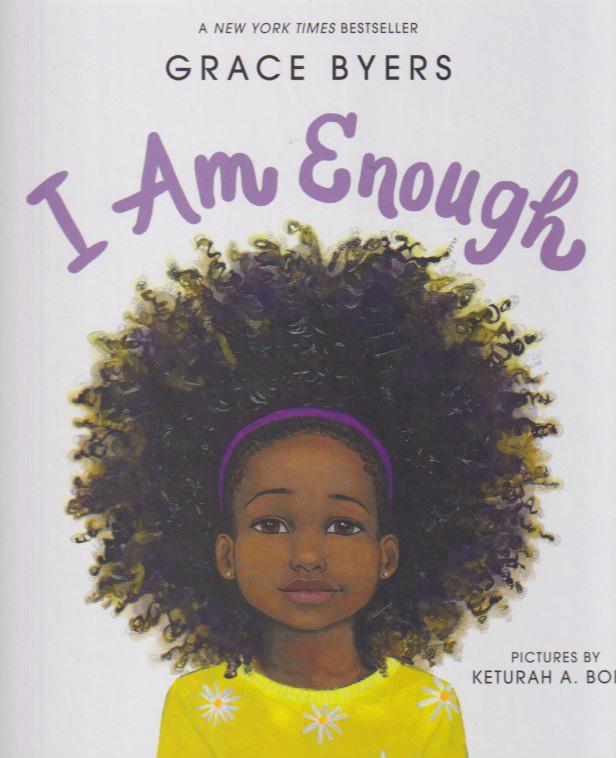
is a story of autumn and wildlife in the wilderness, as a bear gets ready for winter hibernation. It is perfect for setting the stage for more in-depth research into the life of wild animals in the Northern hemisphere. Children may be curious about hibernation. They may ask questions like, “Do other animals hibernate or just bears?” “How can they sleep so long?” “Don’t they get hungry?” What do other animals do during winter?” It made me very curious about the lives of bears and other animals. I would recommend this book for children ages 4 to 8 years old.
Montessori: A Dictionary for Families
 Written by Faye Lundberg
Written by Faye Lundberg
This is a great little tool to get parents started in their knowledge and understanding of Montessori at the Early Childhood level. You can purchase this booklet at amazon.com.
A Spider Named Itsy
Every Autumn Comes the Bear
 Written by Jim Arnosky
Written by Jim Arnosky
This is a beautifully written and illustrated book by Jim Arnosky. It
A Handwashing Story: Told with Tiny Hands
 Written by Pat Prisk
Illustrated by Jason D. McIntosh
Written by Pat Prisk
Illustrated by Jason D. McIntosh
This is a wonderfully fun, imaginative story of getting cleaned up! The illustrations are very colorful and fanciful! They make cleaning up a joyful adventure rather than drudgery. Pat Prisk shows (down in the corner of each page) the steps to washing hands. She then reinforces the process by putting each of the steps to handwashing on one page at the end of the book. She also includes ideas for parents, caregivers, and other adults involved in caring for children. I think youngsters 2 to 7 years old will love this book.
This book is a paperback booklet originally created to fill a need in the author’s school. She found that parents were interested in knowing more about their child’s classroom experience. Her idea was to share information about the basic principles of a Montessori classroom and the activities within the 3–6-year-old (Early Childhood) classroom.
Ms. Lundberg briefly describes each curriculum area and then some of the key lessons in those areas. She has included photos of the materials along with their descriptions. She has also added a short biography of Dr. Montessori and some ideas for the home.
Written by Steve Light
This book brings new light to the children’s song about an itsy-bitsy spider! The illustrations are action packed, the spider is persistent, and in the process Itsy not only builds a new house but makes new friends as well. The words to the song are written out at the end of the book. Fun to read, fun to sing, and fun to imagine! I would recommend this book for children 2 to 7 years old.

Calling all teachers, parents, & children!
We would love to publish reviews of your favorite books. Send book reviews to Lorna at: lornamcgrath@ montessori.org
TOMORROW'S CHILD © § SEPTEMBER 2023 § WWW.MONTESSORI.ORG 31
BOOK REVIEWS
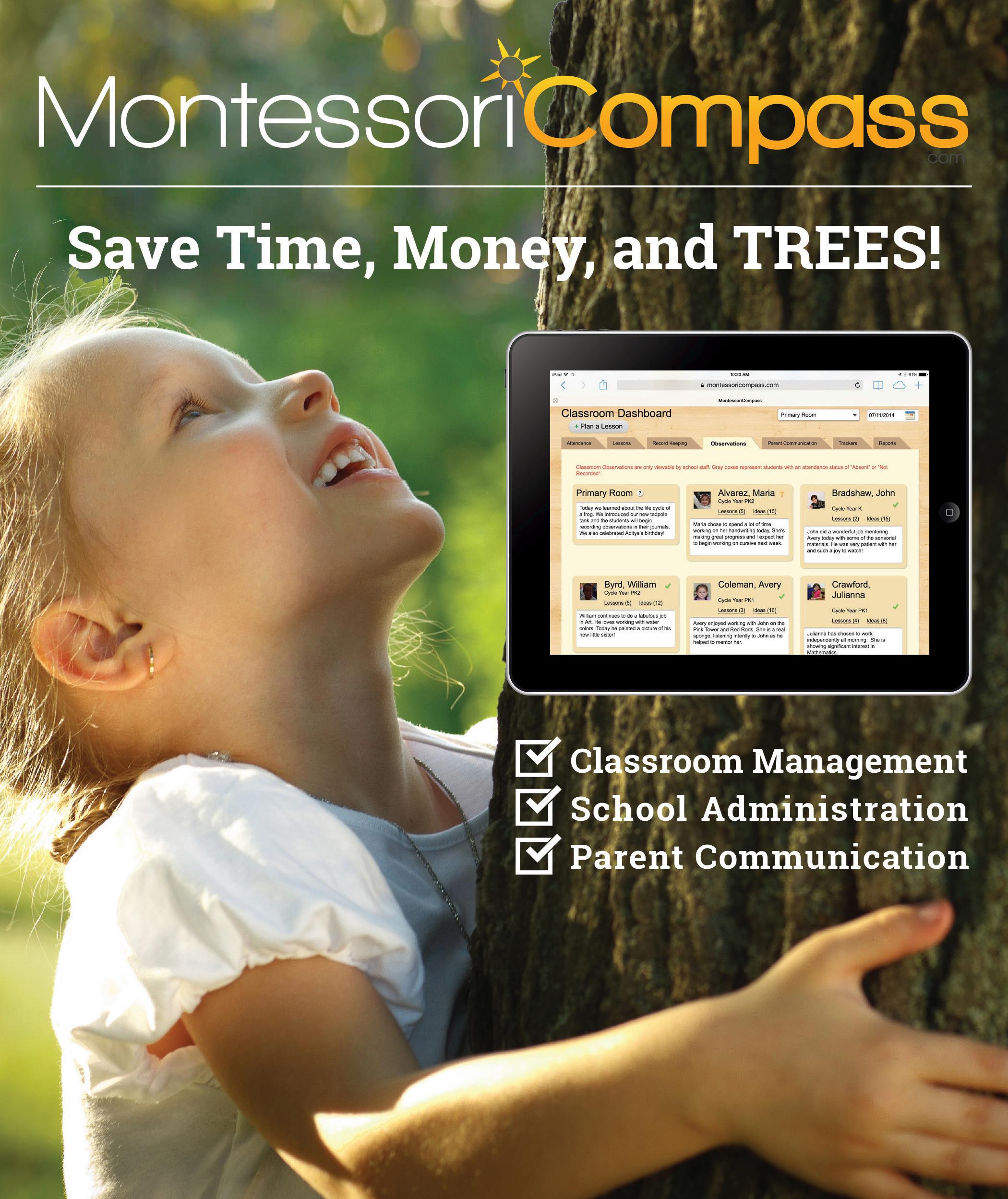
Non-Profit Org U.S. Postage PAID St. Petersburg, FL PERMIT # 597 The Montessori Foundation 19600 E SR 64 • Bradenton, FL 34212













 by Alanea Williams
by Alanea Williams




















































 by Allison Gerlach
by Allison Gerlach





 by Tim Seldin, President, The Montessori Foundation
by Tim Seldin, President, The Montessori Foundation










 by
by



















 Written by Faye Lundberg
Written by Faye Lundberg
 Written by Jim Arnosky
Written by Jim Arnosky
 Written by Pat Prisk
Illustrated by Jason D. McIntosh
Written by Pat Prisk
Illustrated by Jason D. McIntosh

